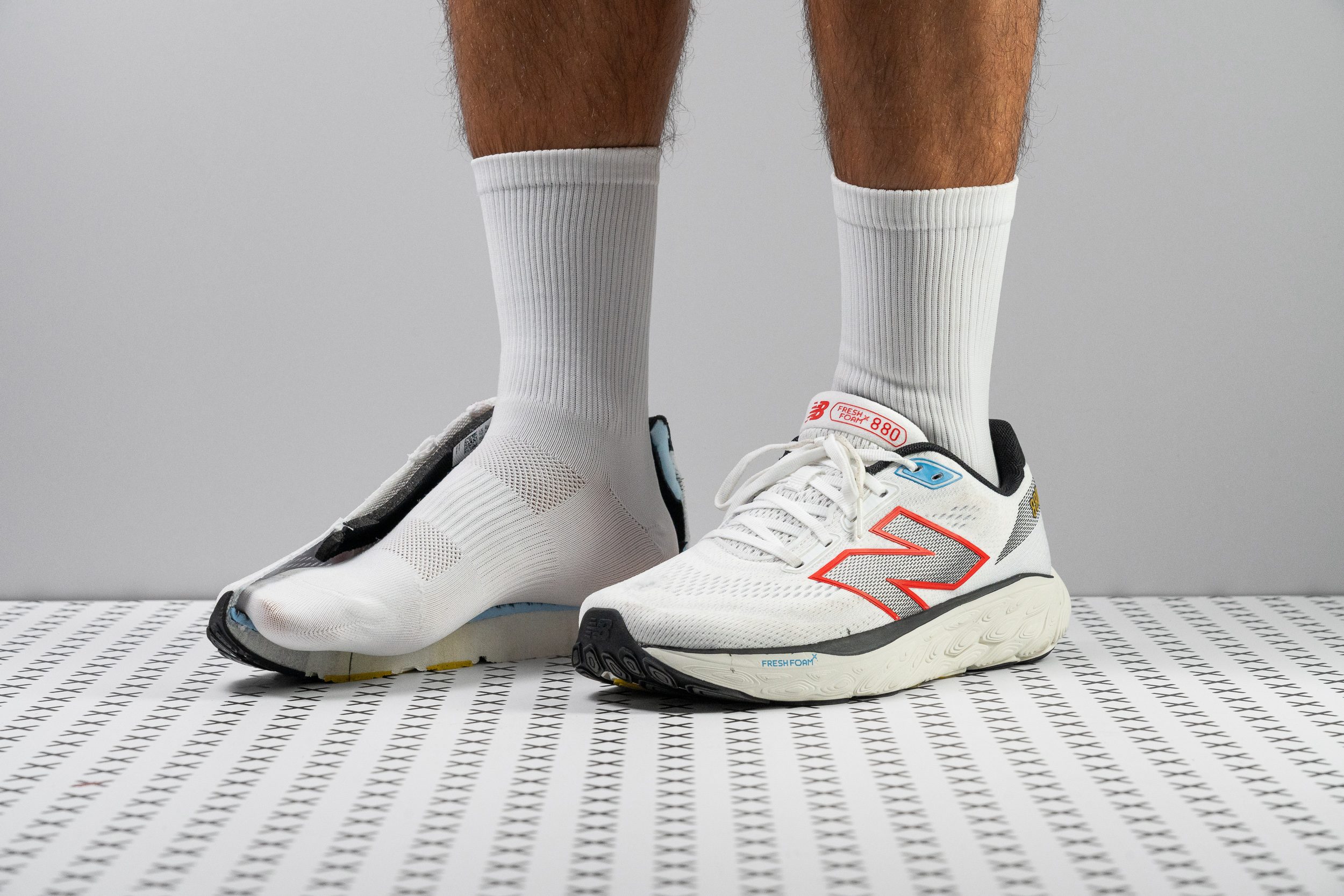Nuestra conclusión
Pros
- Buen ajuste con una lengüeta reforzada
- Espaciosas para pies anchos
- Buen precio
- Knit suave y cómodo
- Más ligeras que sus predecesoras
- Mediasuela mullida
- Suela exterior con bastante caucho
- Disponibles hasta en cuatro anchuras
- Disponibles hasta en cuatro anchuras
Contras
- Flujo de aire limitado
- La mediasuela se vuelve más rígida en invierno
- La mediasuela se vuelve más firme en invierno
- La mediasuela se vuelve más firme en invierno
Veredicto de los usuarios
- Top 20% más vendidas zapatillas de running
Comparativa
Las zapatillas de running más parecidas
+ + Añadir unas zapatillas | |||||
|---|---|---|---|---|---|
| Puntuación global | 88 Notables | 85 Buenas | 79 Buenas | 88 Notables | |
| Precio | 160 € | 160 € | 70 € | 90 € | |
| Pace | Correr a diario | Correr a diario | Correr a diario | Correr a diario | |
| Absorción de impactos | Moderada | Moderada | Moderada | Baja | |
| Retorno de energía | Moderado | Moderado | Bajo | Bajo | |
| Tracción | Alta | Alta | Moderada | Baja | |
| Arch support | Neutral | Neutral | Neutral | Neutral | |
| Peso laboratorio Peso marca | 8.9 oz / 251g 8.7 oz / 247g | 10.1 oz / 286g 9.9 oz / 281g | 9.7 oz / 275g 9.7 oz / 275g | 8.5 oz / 241g 9.2 oz / 260g | |
| Lightweight | ✗ | ✗ | ✗ | ✓ | |
| Drop laboratorio Drop marca | 8.0 mm 8.0 mm | 4.3 mm 6.0 mm | 7.8 mm 8.0 mm | 9.3 mm 10.0 mm | |
| Técnica de carrera | TalónMedio/antepié | Medio/antepié | Medio/antepié | TalónMedio/antepié | |
| Talla | Tallan un poquito pequeño | Tallan un poquito pequeño | Tallan bien | Tallan bien | |
| Rigidez de la mediasuela | Blanda | Blanda | Equilibrada | Equilibrada | |
| Diferencia de la rigidez de la mediasuela en frío | Grande | Pequeña | Pequeña | Normal | |
| Durabilidad de la parte delantera | Decente | Decente | Mala | Buena | |
| Durabilidad del acolchado del talón | Baja | Alta | Alta | Alta | |
| Durabilidad de la suela exterior | Decente | Decente | Decente | Decente | |
| Transpirabilidad | Media | Media | Media | Alta | |
| Anchura / ajuste | Media | Media | Media | Media | |
| Anchura de la parte delantera | Ancha | Media | Media | Media | |
| Flexibilidad | Moderada | Rígida | Moderada | Moderada | |
| Rigidez torsional | Moderadas | Rígidas | Moderadas | Moderadas | |
| Rigidez del contrafuerte del talón | Moderado | Rígido | Rígido | Moderado | |
| Rocker | ✗ | ✓ | ✗ | ✗ | |
| Talón laboratorio Talón marca | 33.0 mm 31.0 mm | 39.7 mm 40.5 mm | 31.2 mm 31.0 mm | 29.7 mm 30.0 mm | |
| Antepié laboratorio Antepié marca | 25.0 mm 23.0 mm | 35.4 mm 34.5 mm | 23.4 mm 23.0 mm | 20.4 mm 20.0 mm | |
| Anchuras disponibles | EstrechoEstándarAnchoExtra Ancho | EstrechoEstándarAnchoExtra Ancho | EstándarAnchoExtra Ancho | Estándar | |
| Orthotic friendly | ✓ | ✓ | ✓ | ✓ | |
| Estación | Todas las estaciones | Todas las estaciones | Todas las estaciones | VeranoTodas las estaciones | |
| Removable insole | ✓ | ✓ | ✓ | ✓ | |
| Clasificación | #269 Top 41% | #199 46% inferior | #324 13% inferior | #124 Top 34% | |
| Popularidad | #127 Top 20% | #31 Top 9% | #78 Top 21% | #110 Top 30% |
Quién debería comprárselas
Estamos convencidos de que las New Balance Fresh Foam X 880 v14 les van a encantar a:
- Los corredores que están buscando unas zapatillas de entrenamiento fiables con una mediasuela blanda para estar cómodos cada vez que salen a correr.
- Los que quieren un modelo neutro con una parte superior de knit espaciosa, y no les importa que la zona de los dedos no sea muy alta.
- Las personas que están pensando en la serie 1080 pero están buscando una opción más asequible con un poco menos de amortiguación.

Quién NO debería comprárselas
Aunque las 880 v14 tienen una buena relación calidad-precio, creemos que los corredores que están buscando una experiencia más amortiguada y premium deberían echarle un ojo a las New Balance Fresh Foam X 1080 v13. Mejoran muchas de las características de las 880, entre las que se incluye una pisada más blanda y mullida, pero tienen un drop un poco más bajo que puede no gustarles a los talonadores. Si esto te preocupa, te recomendamos que pruebes las ASICS Nimbus 26, que son una opción más equilibrada.
Personalmente, pensamos que a los corredores más pesados igual la amortiguación de las 880 v14 no les es suficiente. Si eres uno de ellos o si esto también te preocupa, te sugerimos que les eches un vistazo a las ASICS Novablast 4, que tienen un precio parecido pero cuentan con mucha más espuma y se sienten muy amortiguadas bajo los pies.
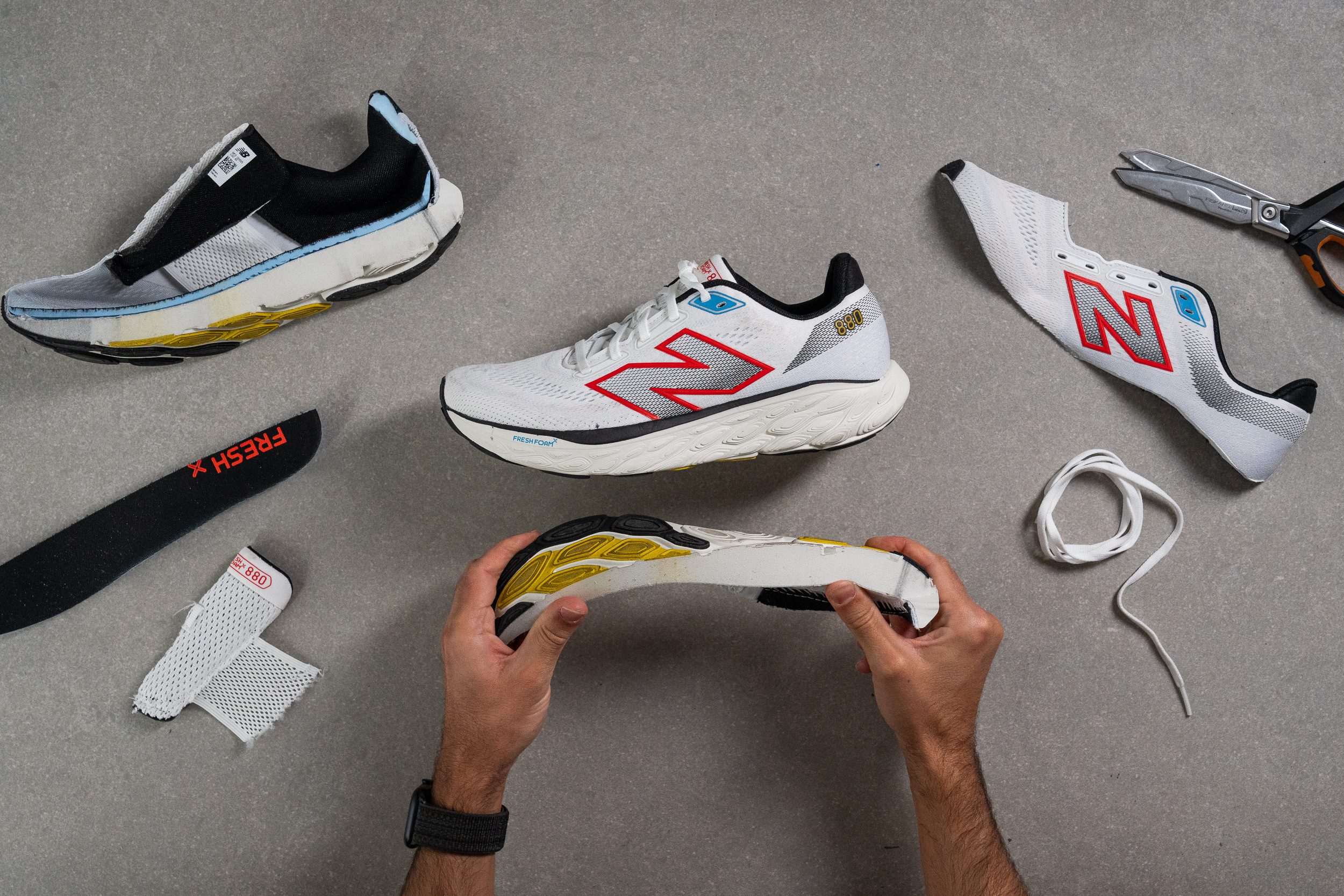
Amortiguación
Shock absorption
La absorción de impactos es moderada, con 121 SA en el talón y 99 SA en el antepié. Pero..., ¿por qué estas zapatillas no se han llevado puntuaciones más altas?
Pues mira, es fácil: New Balance necesita mantener la consistencia de su línea, y las 880 no están hechas para invadir el territorio de las 1080.
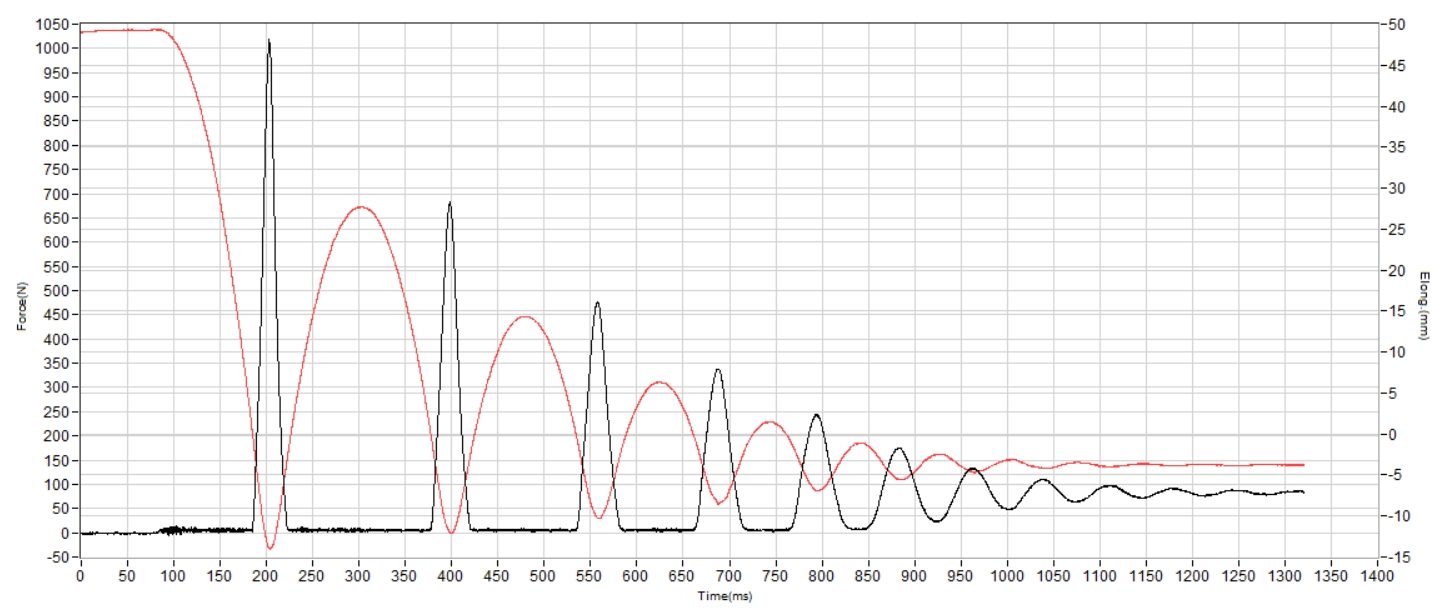
| Fresh Foam X 880 v14 | 121 SA |
| Media | 129 SA |
Energy return
Las 880 v14 no brillan por su retorno de energía, ya que están diseñadas para ser cómodas a ritmos tranquilos. De todos modos, el 57,9 % en el talón y el 62,7 % en el antepié no están nada mal para un modelo de entrenamiento diario, sobre todo para los corredores de mediopié o de metatarsos.
| Fresh Foam X 880 v14 | 57.9% |
| Media | 58.5% |
Altura de la suela en la zona del talón
Las 880 v14 están diseñadas como unas zapatillas de entrenamiento diario, así que su objetivo es ser lo más versátiles posible, por lo que nos parecen adecuadas para la mayoría de los corredores. Cuando medimos su altura en el talón, nos dio 33,0 mm: se centran en ser estándar, proporcionando una amortiguación sólida sin entrar en la categoría maximalista.
Creemos que esta altura del talón les ofrece una buena protección a los talonadores que están buscando una opción fiable de media distancia. Aunque no están diseñadas para ofrecer una amortiguación extrema, nos parecen una buena opción para que los corredores más ligeros se enfrenten a largas distancias.

| Fresh Foam X 880 v14 | 33.0 mm |
| Media | 34.8 mm |
Altura de la suela en el antepié
El antepié imita el diseño del talón, así que también podemos definirlo como estándar. Cuando medimos la altura de esta zona, nos dio 25,0 mm, por lo que ofrece una cantidad decente de amortiguación bajo los pies pero te deja sentir el suelo de todos modos. Es muy probable que esta combinación te venga como anillo al dedo para salir a correr en tu día a día.
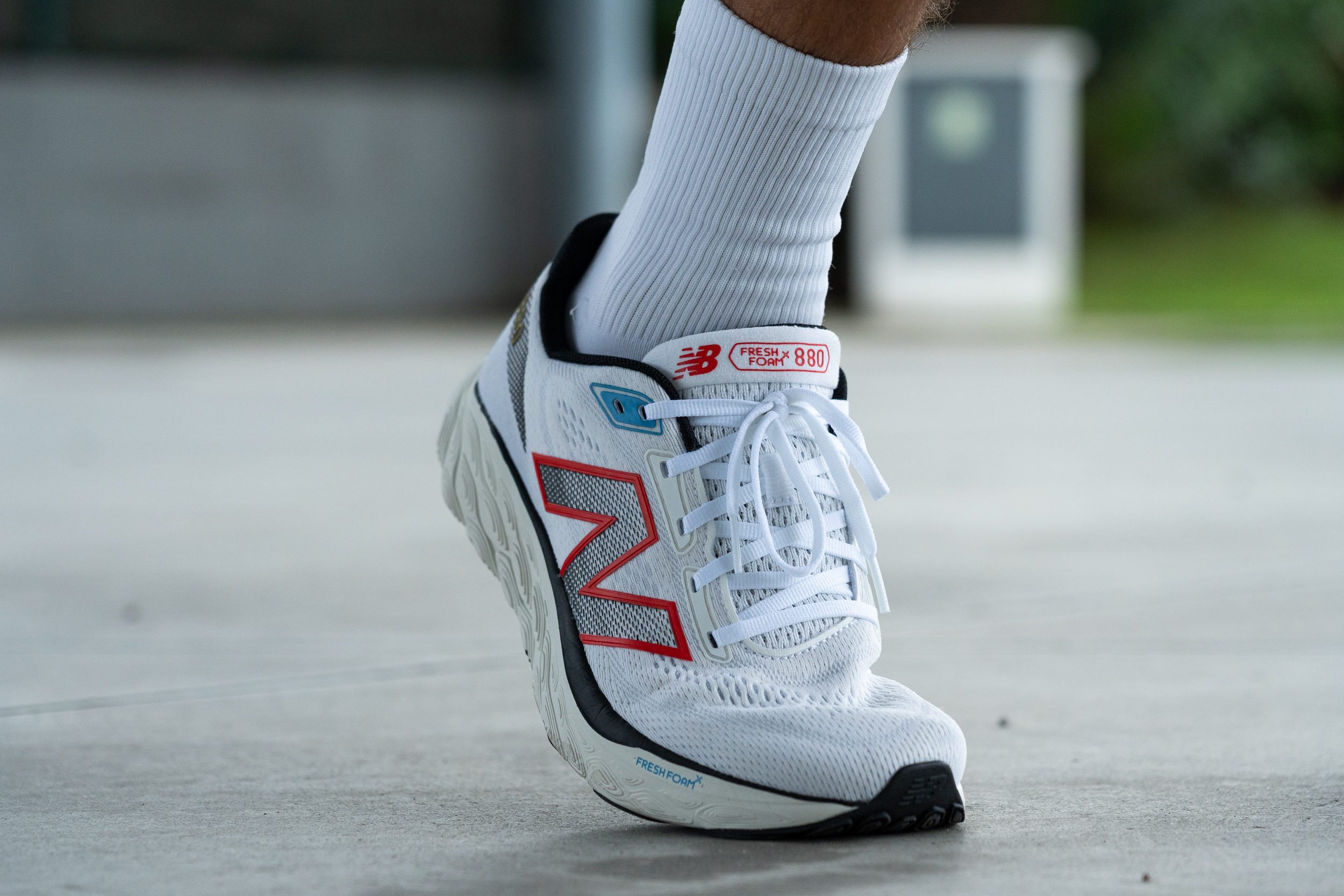
En nuestra experiencia, este diseño es ideal para las personas a las que les gusta sentir el suelo bajo los pies al correr, pero si estás buscando más protección y no te importa olvidarte del asfalto, puede que prefieras un modelo minimalista como las Puma MagMax Nitro.

| Fresh Foam X 880 v14 | 25.0 mm |
| Media | 26.2 mm |
Drop
Si se te dan bien los números, ya habrás adivinado que las New Balance Fresh Foam X 880 v14 son una de las pocas zapatillas en las que el drop que la marca dice que tienen coincide con el que nos da a nosotros al medirlo.
El drop de 8,0 mm de este modelo es estándar dentro de la categoría de las zapatillas de entrenamiento diario. Algunas marcas se decantan por los 10 mm pero, en nuestra experiencia, esa diferencia no se nota al correr, y sigue siendo un diseño con drop alto.
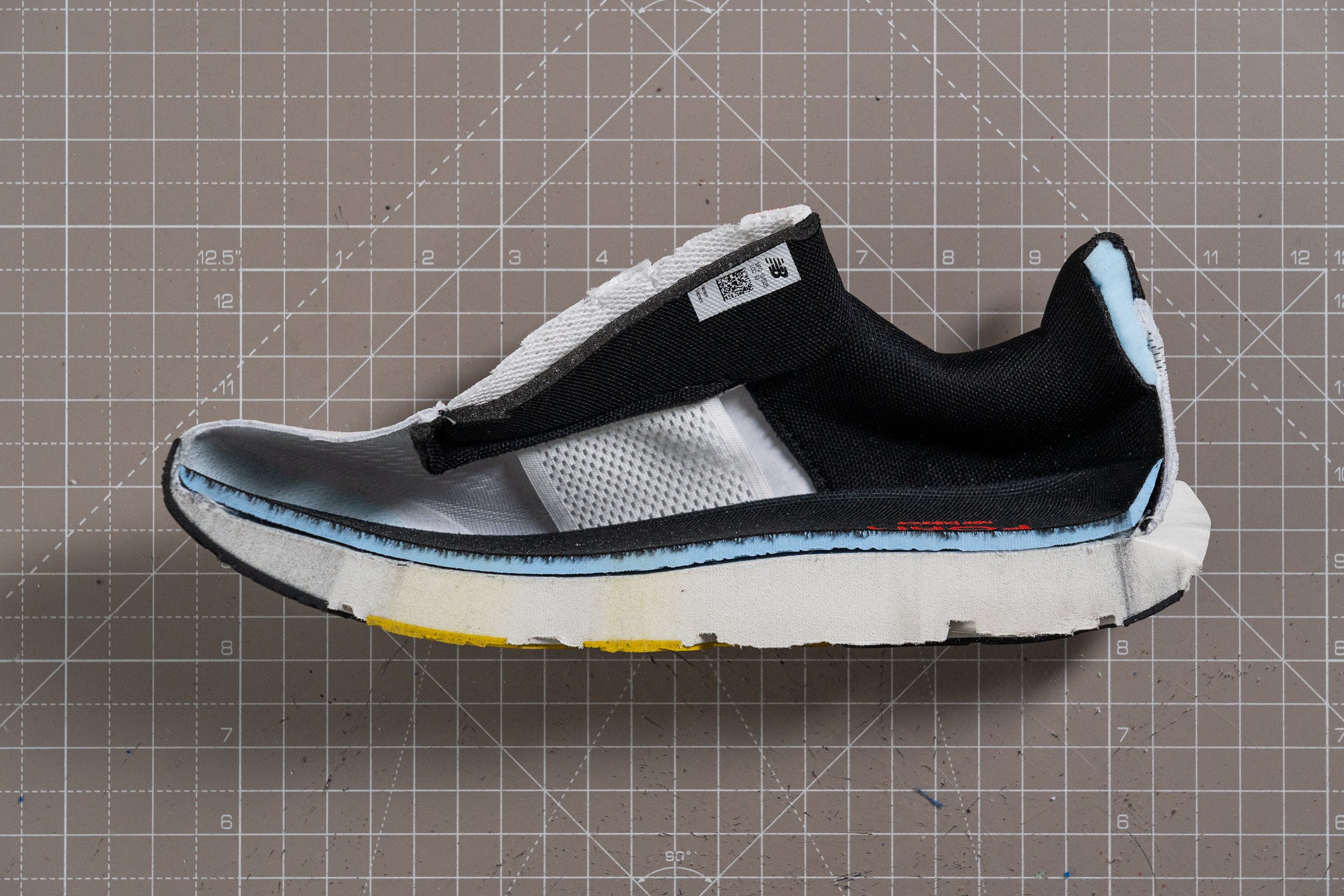
| Fresh Foam X 880 v14 | 8.0 mm |
| Media | 8.6 mm |
Suavidad de la mediasuela
New Balance sacó a la luz su compuesto Fresh Foam X pensando en los corredores que prefieren una pisada mullida y, en nuestra opinión, la marca ha conseguido convertirse en la opción número 1 para los atletas que quieren un modelo de entrenamiento diario blandito.
Eso sí, que unas zapatillas sean blandas no siempre significa que sean mejores, ya que todo depende de las preferencias de cada uno. Si lo que estás buscando es una sensación mullida, las Fresh Foam X 880 v14 ofrecen una pisada bastante más blanda que la de la mayoría de sus competidoras. Nuestro durómetro lo confirmó al marcar 15,6 HA.
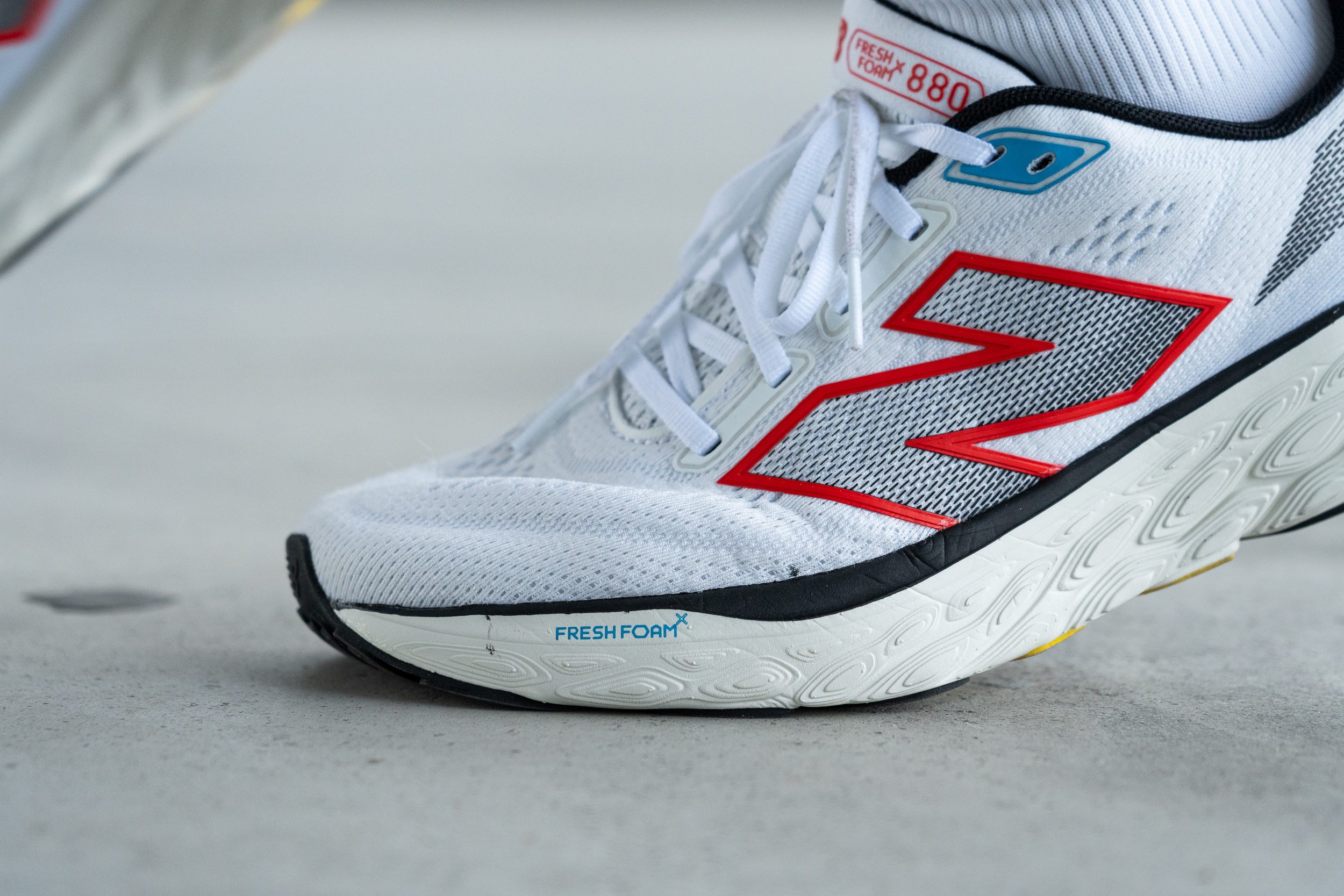
Eso sí, el retorno de energía cuenta una historia diferente. Como la Fresh Foam X es EVA, no es la mejor en este aspecto, así que no te esperes el rebote del que disfrutarás con espumas más reactivas.
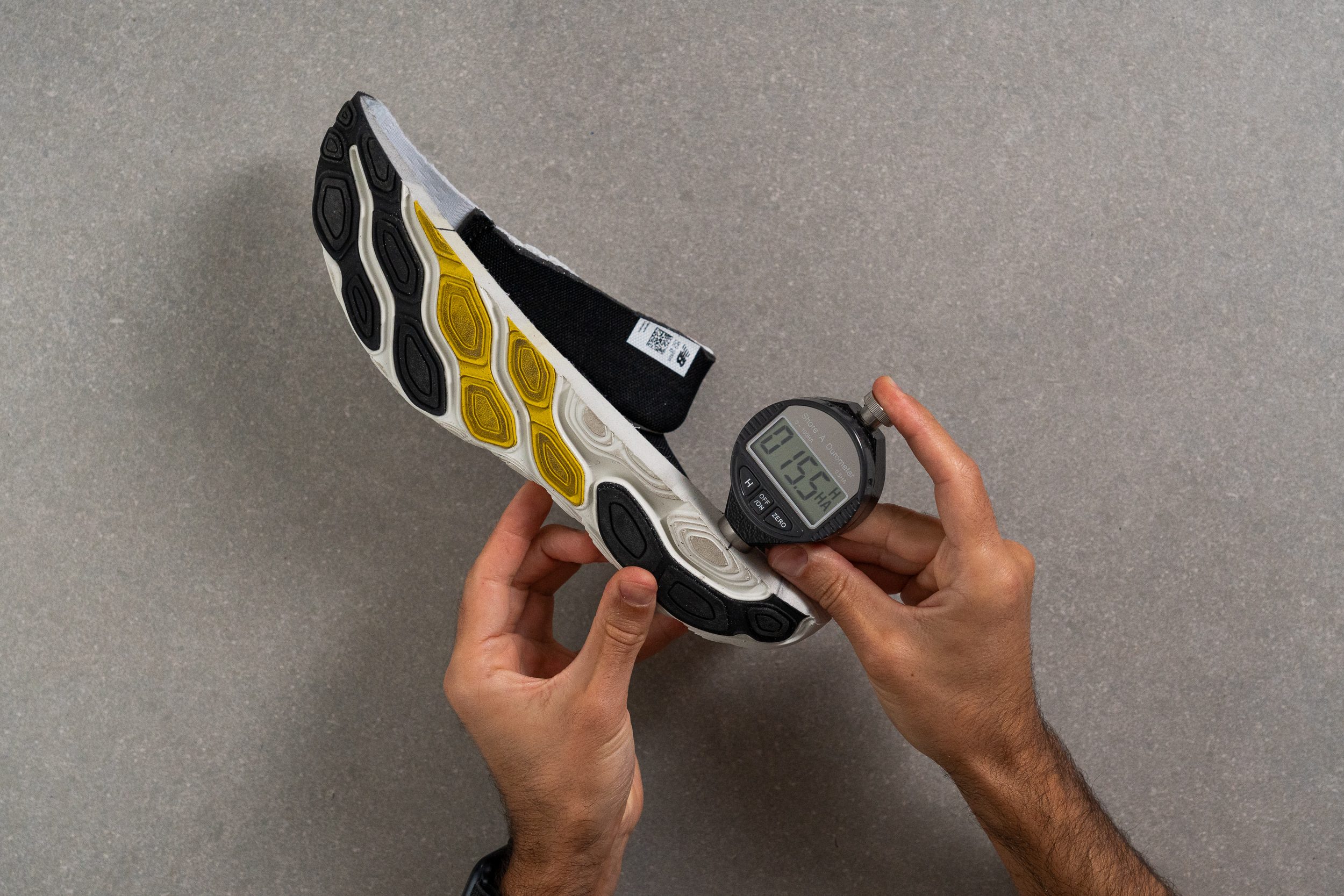
| Fresh Foam X 880 v14 | 15.6 HA |
| Media | 20.4 HA |
Rocker
Descubrimos que New Balance decidió que las 880 v14 tendrían un diseño sin rocker, que encaja bien con la flexibilidad de estas zapatillas y la altura estándar de su suela.

Según nuestra experiencia, los diseños sin rocker como este animan a los músculos del pie a participar más, fortaleciéndolos poco a poco con el tiempo; algo que es beneficioso para todos los corredores. Por lo tanto, creemos que tener modelos con diseños distintos en tu rotación es una muy buena idea.
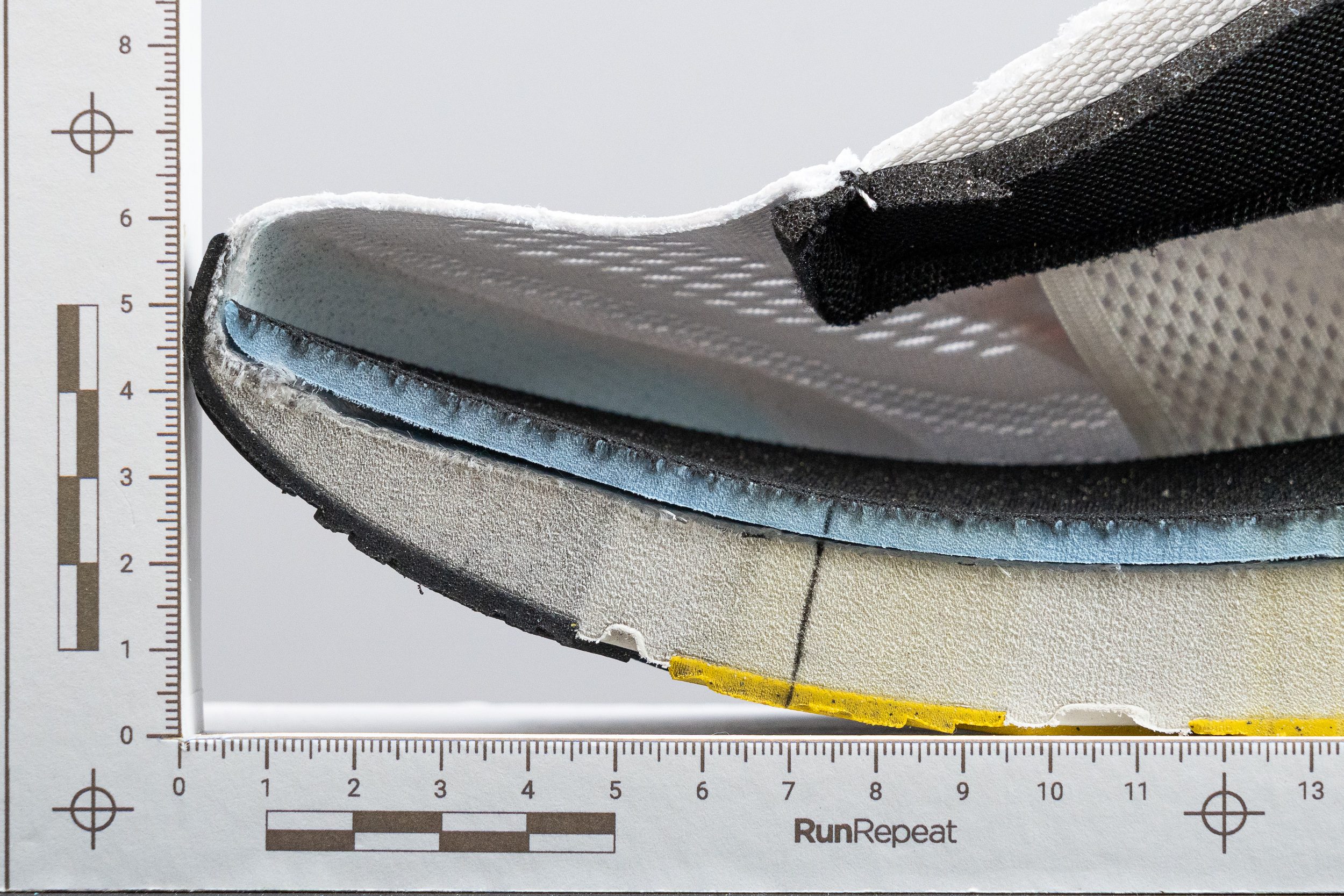
Tallaje y ajuste
Talla
Las New Balance Fresh Foam X 880 v14 quedan un poco pequeñas (144 votos).
Anchura / Ajuste
Creemos que New Balance priorizó la comodidad en las 880 v14, algo que nos quedó muy claro cuando medimos su espacio interior.
Con una generosa anchura de 96,8 mm, les ofrecen espacio de sobra a la mayoría de los corredores, sobre todo en las carreras más largas. Además, New Balance las vende en tallas anchas (2E y 4E) en algunos países.

| Fresh Foam X 880 v14 | 96.8 mm |
| Media | 95.1 mm |
Anchura de la parte delantera
La anchura de las 880 nos dejó boquiabiertos desde el minuto uno, y nos quedó incluso más claro cuando medimos la zona del dedo gordo. Sus 76,2 mm hacen que sea más ancha que la de la mayoría de las zapatillas del mercado.
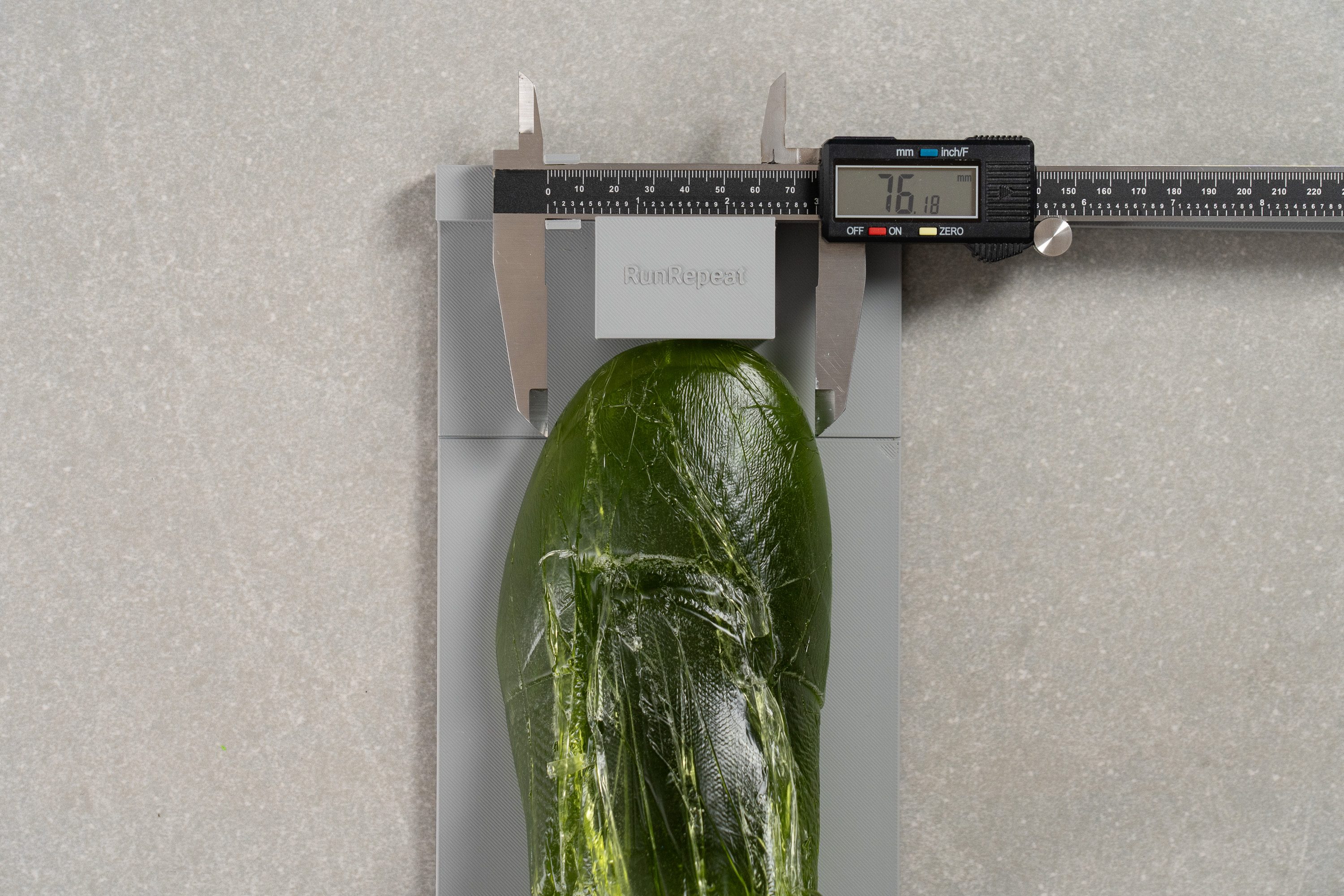
| Fresh Foam X 880 v14 | 76.2 mm |
| Media | 73.2 mm |
Altura de la parte delantera
Además, New Balance también ha sido generosa con el volumen vertical de la zona de los dedos. Sus 28,5 mm garantizan que hay espacio de sobra para mover los dedos hacia arriba.
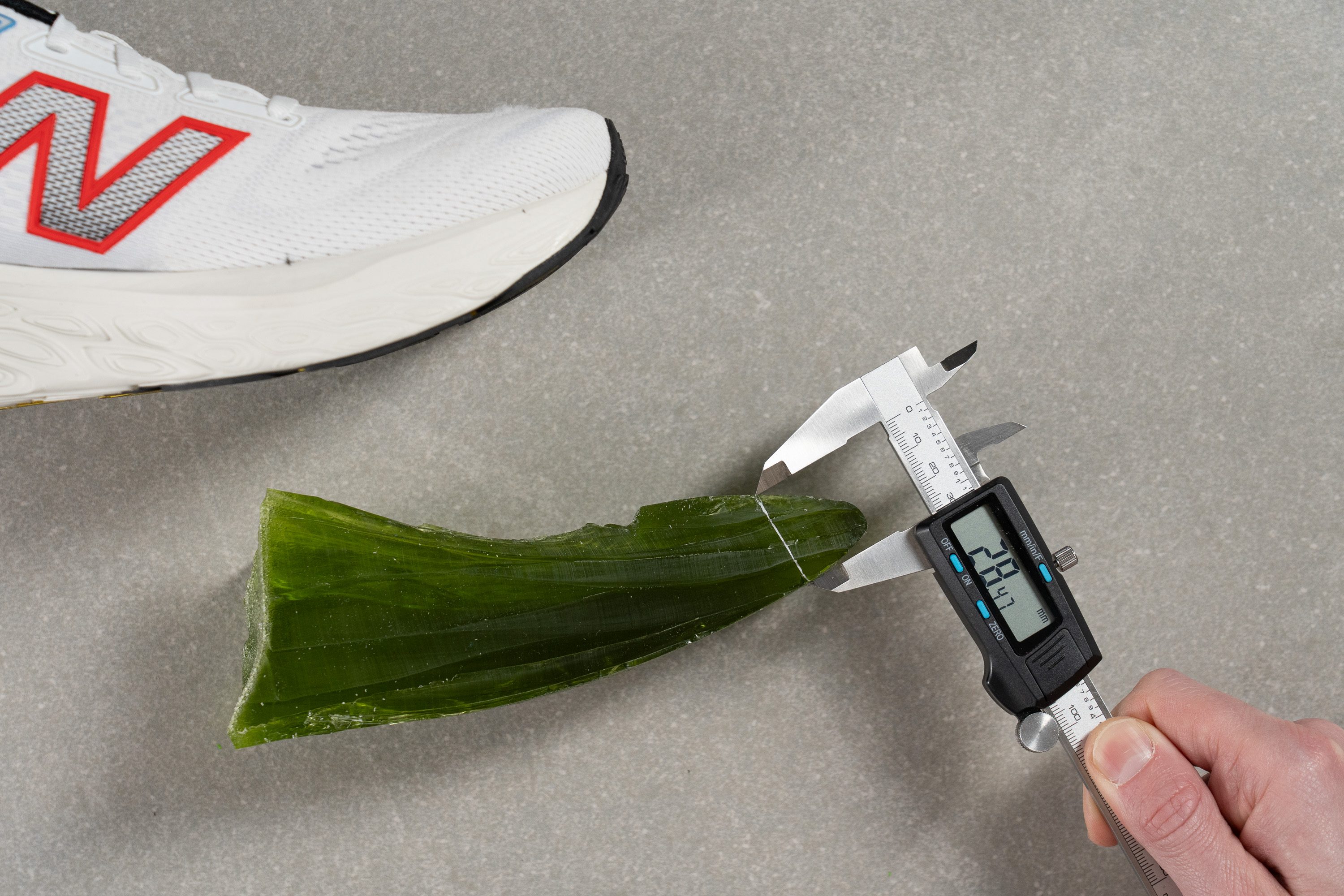
| Fresh Foam X 880 v14 | 28.5 mm |
| Media | 27.1 mm |
Tracción / Agarre
Traction test
Las 880 v14 nos demostraron que tienen un agarre adecuado tanto en asfalto seco como mojado, ganándose nuestra aprobación para los días de lluvia.
Su agarre en el antepié se llevó un resultado de 0,51 en nuestra prueba SATRA TM144, confirmando así la sólida tracción de estas New Balance.
| Fresh Foam X 880 v14 | 0.51 |
| Media | 0.48 |
Diseño de la suela exterior
Descubrimos que la suela exterior de las 880 v14 utiliza el compuesto NDurance de New Balance, que es un caucho que hemos visto en muchas de sus zapatillas de entrenamiento. El diseño sigue el mismo estilo que el de la familia Fresh Foam X, combinando flexibilidad con este nuevo aspecto característico.
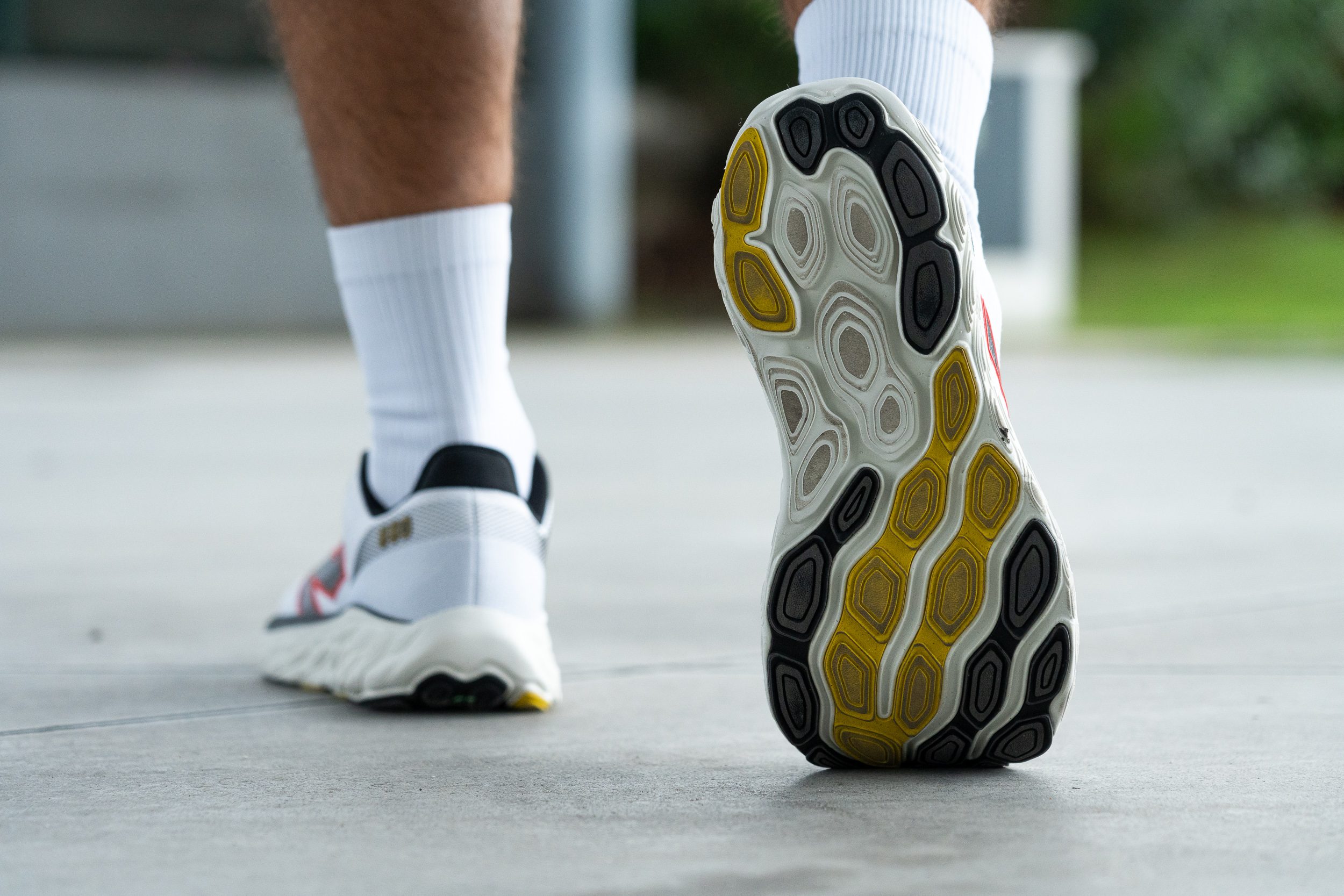
Flexibilidad / Rigidez
Hicimos nuestra mítica prueba de flexión para medir la fuerza que necesitamos para doblarlas 30 grados, y solo fueron 12,9 N, que es justo lo que nos esperábamos.
Esta flexibilidad es ideal para unas zapatillas de running que también sirven para caminar o incluso para los recados del día a día. Si hubieran sido demasiado rígidas, estas NB nos habrían parecido incómodas, pero creemos que este equilibrio en cuanto a la flexibilidad las hace cómodas para varias situaciones (entre las que se incluyen correr y trotar, claro).
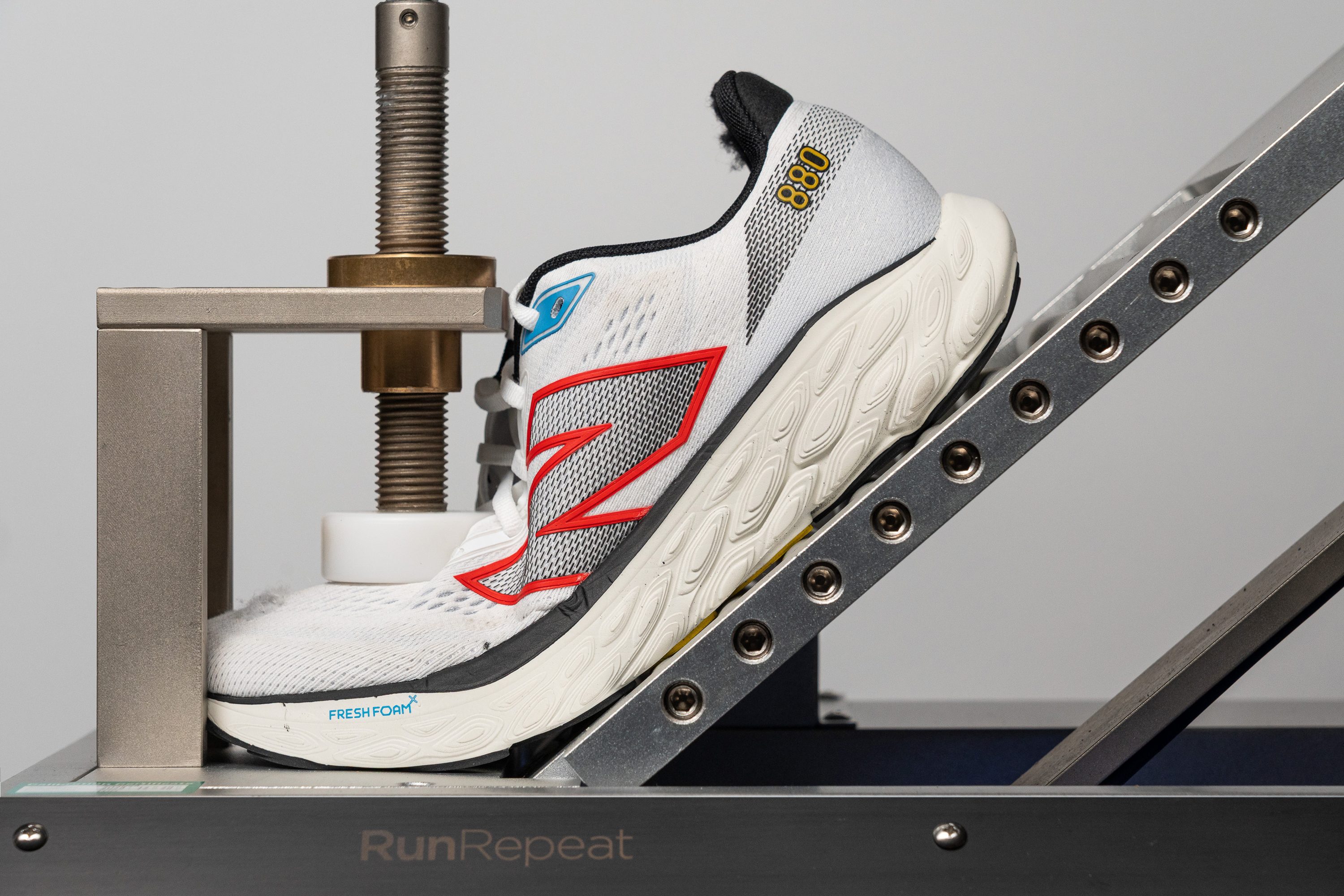
| Fresh Foam X 880 v14 | 12.9N |
| Media | 15.3N |
Rigidez en frío (%)
Igual que nos pasó con la mediasuela, nos esperábamos un resultado estándar o incluso decepcionante en nuestra prueba de frío. Pero solo hubo un aumento del 33 % en cuanto a rigidez, ¡así que ni tan mal!
| Fresh Foam X 880 v14 | 33% |
| Media | 33% |
Peso
No podemos criticar a las New Balance Fresh Foam X 880 v14 en cuanto a peso (aunque sí que tienen un nombre más largo que un día sin pan, madre mía). Sus 251 g hacen que estén a la par con otros modelos que tienen una amortiguación parecida, e incluso son un poco más ligeras que algunos pares.
Estas zapatillas nunca nos parecieron pesadas durante nuestras pruebas de uso corriendo con ellas. Es más, hasta las sentimos ágiles, así que creemos que son una opción sólida para salir a correr a diario.

| Fresh Foam X 880 v14 | 8.9 oz (251g) |
| Media | 9.3 oz (264g) |
Transpirabilidad
New Balance se ha empezado a volver conocida por sus partes superiores de knit, alejándose de la malla de ingeniería en sus zapatillas de entrenamiento; y ese es el caso de las 880 v14, que son su respuesta a las Nike Pegasus 41.
Pero claro, las partes superiores de knit no son perfectas. La transpirabilidad es uno de sus puntos débiles, ya que el grosor del material hace que sea inferior a la media. Esto es justo lo que les pasa a las 880 v14, que sacrifican algo de flujo de aire para volverse un poco más cómodas, así que se llevaron un 3/5 en nuestra prueba de transpirabilidad. Este diseño ofrece un buen rendimiento durante prácticamente todo el año, quitando el verano.
Nos hemos dado cuenta de que New Balance ha hecho hincapié en la ventilación de la parte delantera y la lengüeta, mientras que los laterales de la parte superior están más estructurados. Es muy probable que esto mejore la estabilidad, ya que las zapatillas con Fresh Foam X pueden sentirse un poco inestables al ser tan suaves bajo los pies.

Cuando analizamos el upper de knit con nuestro microscopio, nos encontramos con un diseño de varias capas que prioriza la comodidad y que debería ofrecer una durabilidad decente, aunque eso lo confirmaremos más tarde.
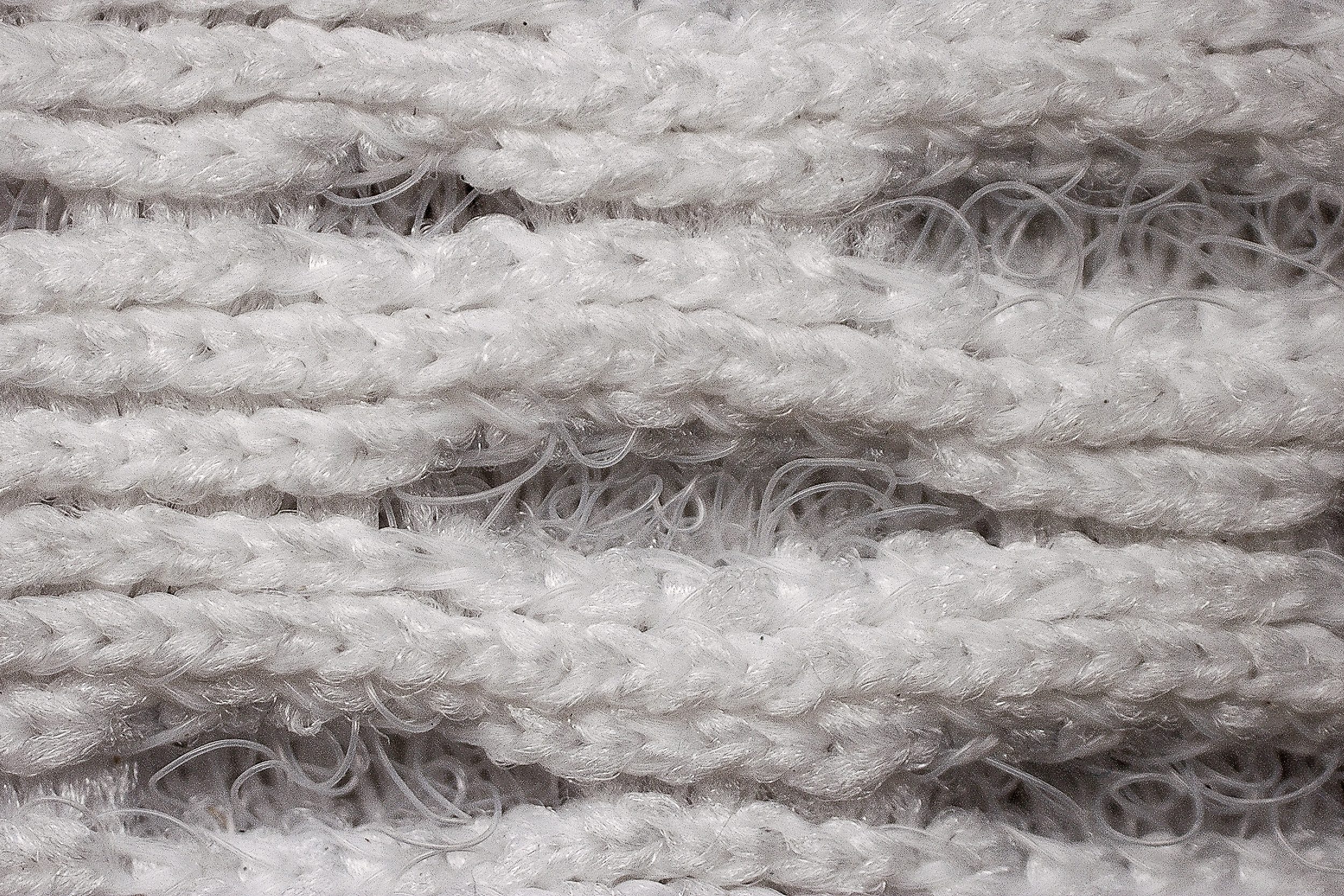
Por último, estudiamos el upper con nuestras propias manos, un método en el que confiamos ciegamente después de analizar cientos de zapatillas en el laboratorio. Confirmamos que es elástico, que está bien acolchado y que, según nuestros pies, también es muy cómodo.
Si no tienes problema en perder un poco de transpirabilidad para conseguir comodidad, este modelo nos parece una gran opción.
| Fresh Foam X 880 v14 | 3 |
| Media | 3.7 |
Estabilidad
Prueba de estabilidad lateral
Como parte de la línea "80", estas New Balance son unas zapatillas neutras, pero descubrimos que la marca de Boston decidió ponerles elementos de estabilidad sutiles para conseguir equilibrar lo blanda que es su mediasuela. Entre ellos, el más notable son sus pareces laterales, que ofrecen sujeción.
Rigidez torsional
Las 880 v14 vuelven a estar dentro de la media en cuanto a rigidez torsional, ya que se han llevado un 3/5 en esta prueba, que es justo lo que nos esperábamos de unas zapatillas de entrenamiento diario. En nuestra opinión, este es el enfoque correcto para un modelo que pretende ser tanto estable como cómodo.
| Fresh Foam X 880 v14 | 3 |
| Media | 3.5 |
Rigidez del contrafuerte del talón
Descubrimos que el contrafuerte del talón consigue ofrecer un buen equilibrio entre rigidez y comodidad, así que no tenemos nada de lo que quejarnos.
La sujeción que ofrece les irá bien a la mayoría de los corredores, pero puede que los talonadores extremos necesiten un poquito más de refuerzo. Creemos que ellos igual prefieren optar por unas zapatillas de estabilidad.
| Fresh Foam X 880 v14 | 3 |
| Media | 2.9 |
Anchura de la mediasuela - antepié
Cogimos nuestro calibre para medir la anchura de la mediasuela en el antepié, que nos dio 116,5 mm, una medida habitual entre las zapatillas para correr a diario.
Esta anchura les ofrece un amplio espacio a los corredores de mediopié o de metatarsos. Siguiendo nuestra experiencia, incluso cuando probamos con zancadas más largas disfrutamos de una plataforma estable.
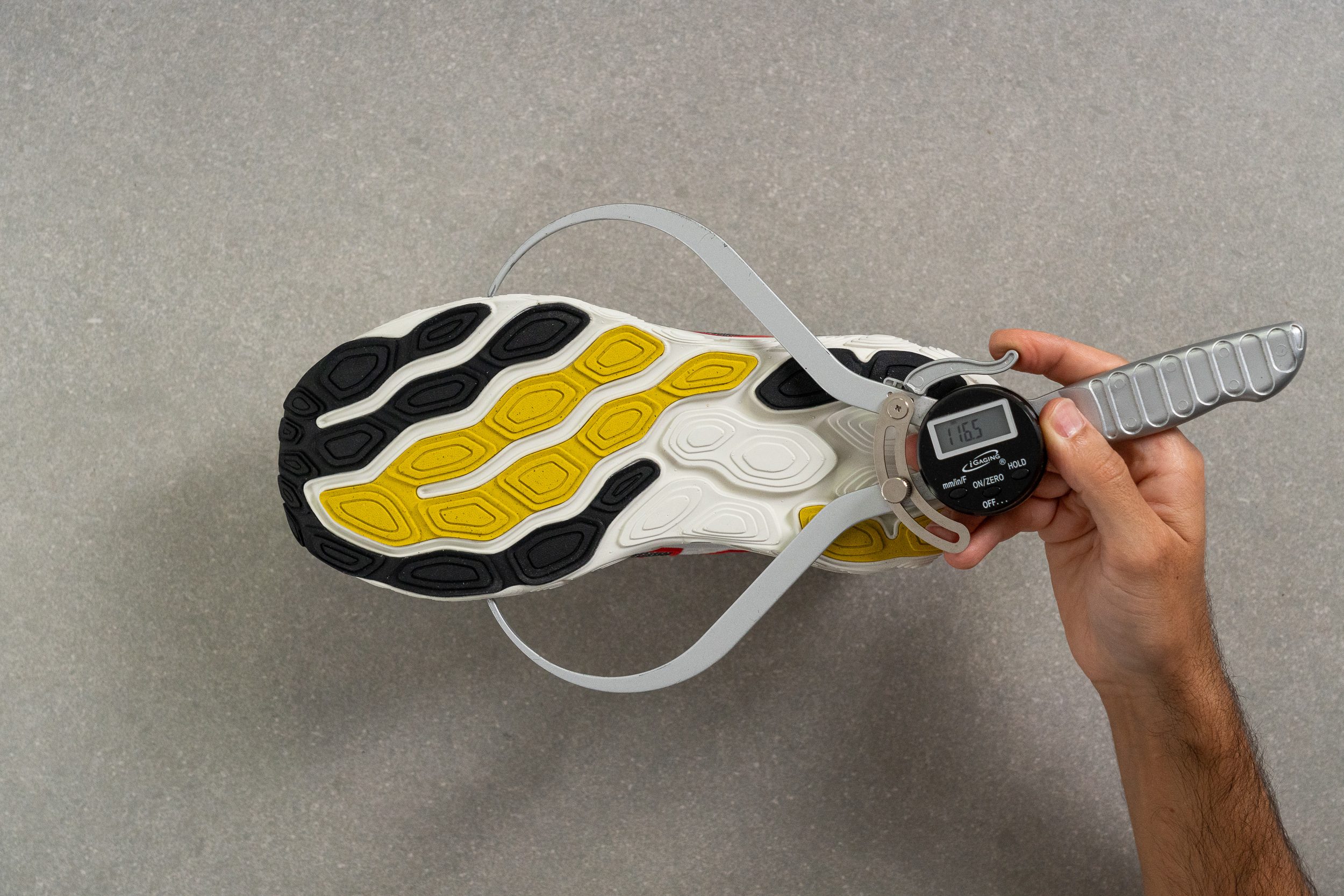
| Fresh Foam X 880 v14 | 116.5 mm |
| Media | 114.4 mm |
Anchura de la mediasuela - talón
El talón es un poco más ancho de lo que nos esperábamos con sus 92,6 mm, lo que beneficia a los talonadores que buscan una mayor sujeción. A esto contribuyen las paredes laterales de la mediasuela de las que hablábamos antes, ya que ayudan a centrar el pie y a reducir los movimientos laterales.
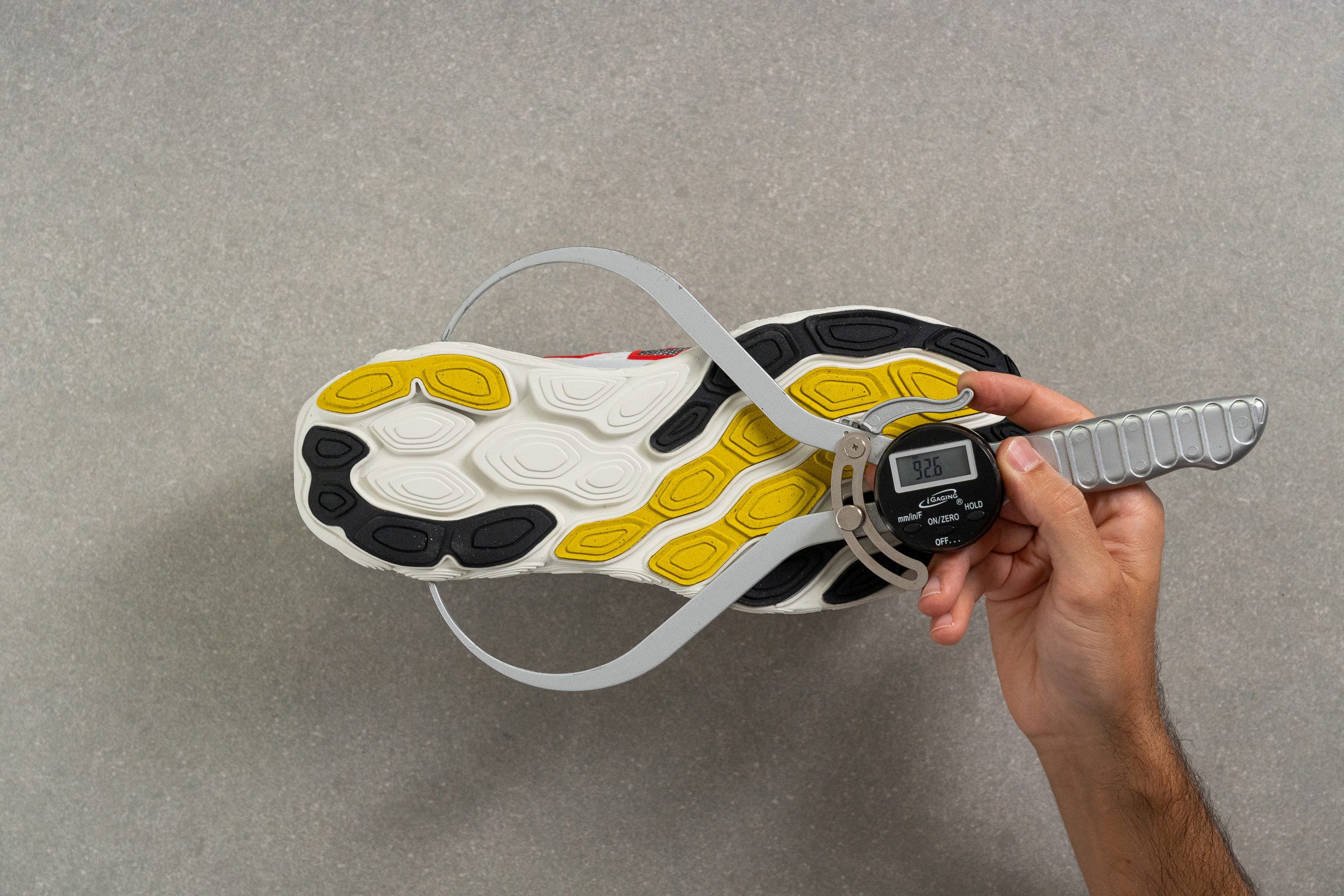
| Fresh Foam X 880 v14 | 92.6 mm |
| Media | 90.7 mm |
Durabilidad
Durabilidad de la parte delantera
Las partes superiores de knit se suelen quedar cortas en durabilidad al ser más suaves que la malla de ingeniería sintética, pero la de este modelo nos sorprendió positivamente en nuestra prueba Dremel.
Decidimos darle un sólido 3/5 en durabilidad. Esta puntuación está bien para cualquier modelo pero, ¿para los de knit...? ¡Pues es excelente!
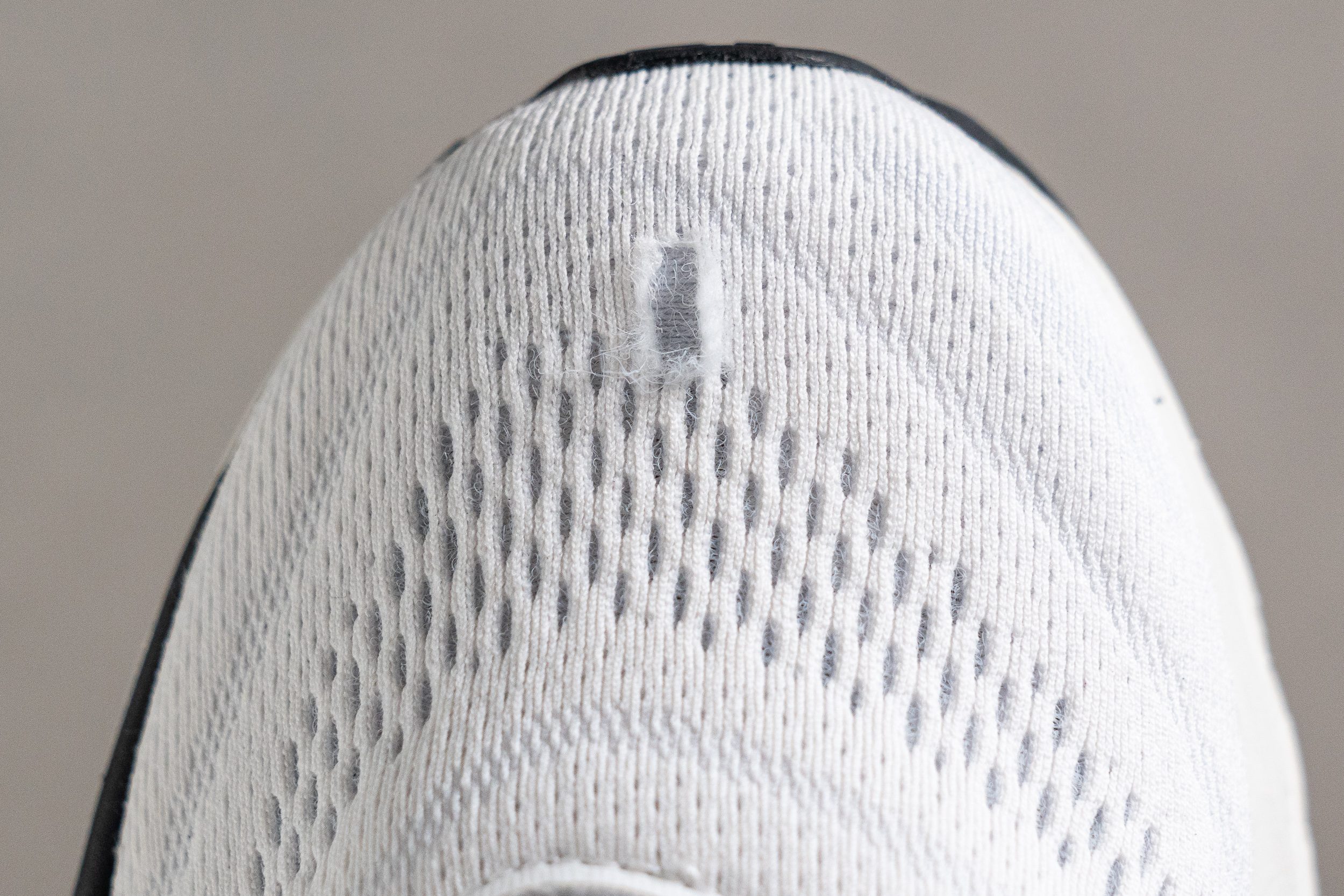
| Fresh Foam X 880 v14 | 3 |
| Media | 2.6 |
Durabilidad del acolchado del talón
El talón sí que nos decepcionó, y creemos que se volverá un problema para los corredores que suelen desgastar sus zapatillas en esta zona.
El vídeo nos lo deja claro... no podemos darles más que un 1/5 en durabilidad del acolchado del talón a estas zapatillas, ¡vaya desastre!
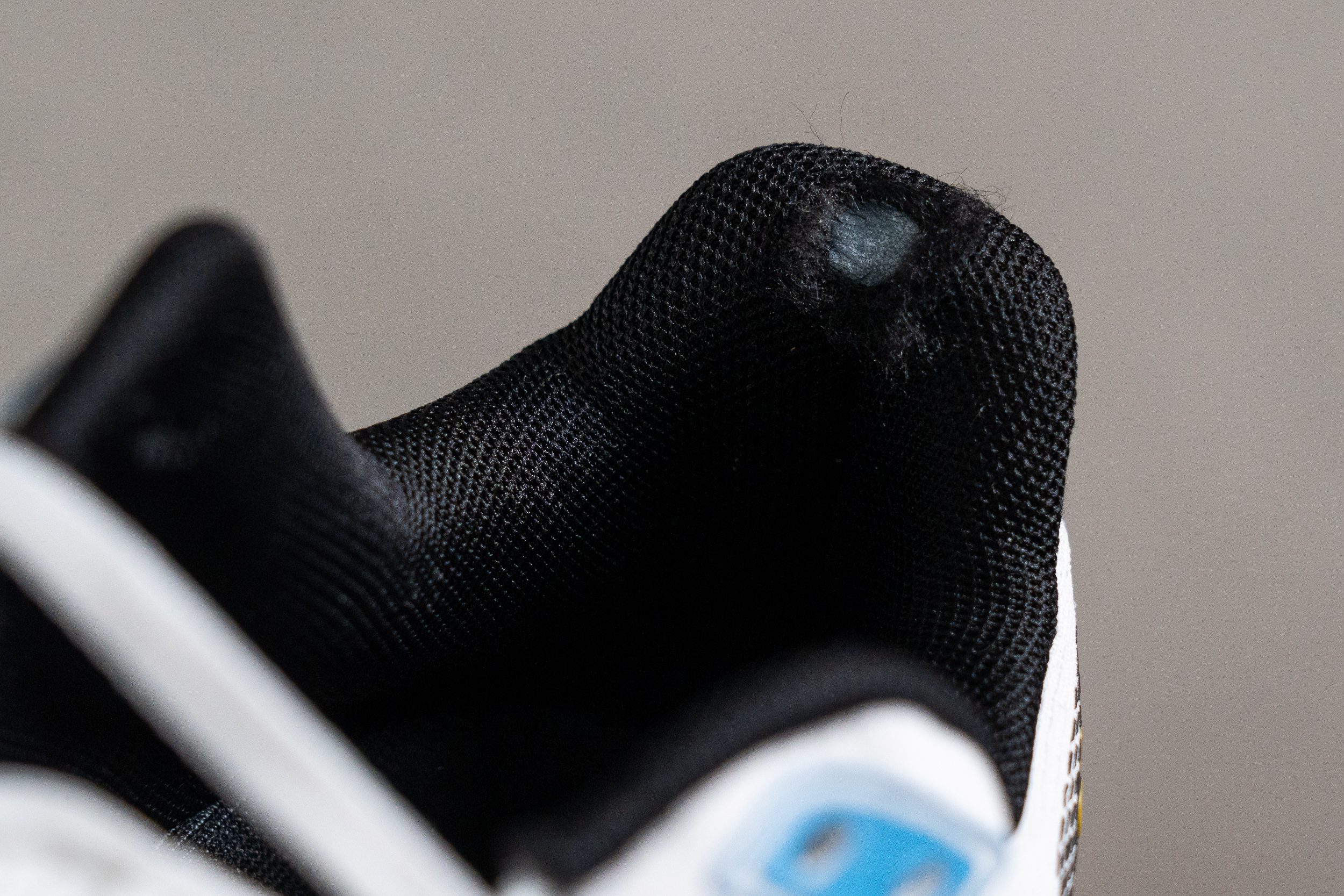
| Fresh Foam X 880 v14 | 1 |
| Media | 3.4 |
Dureza de la suela
La suela exterior de estas zapatillas está hecha utilizando el caucho NDurance de New Balance, un material que tienen varios de sus modelos de entrenamiento. Su rendimiento fue decente, pero tampoco nos pareció nada del otro mundo.

Nuestro durómetro marcó 85,0 HC cuando analizamos su dureza, así que la suela exterior es un poco más dura que la media.
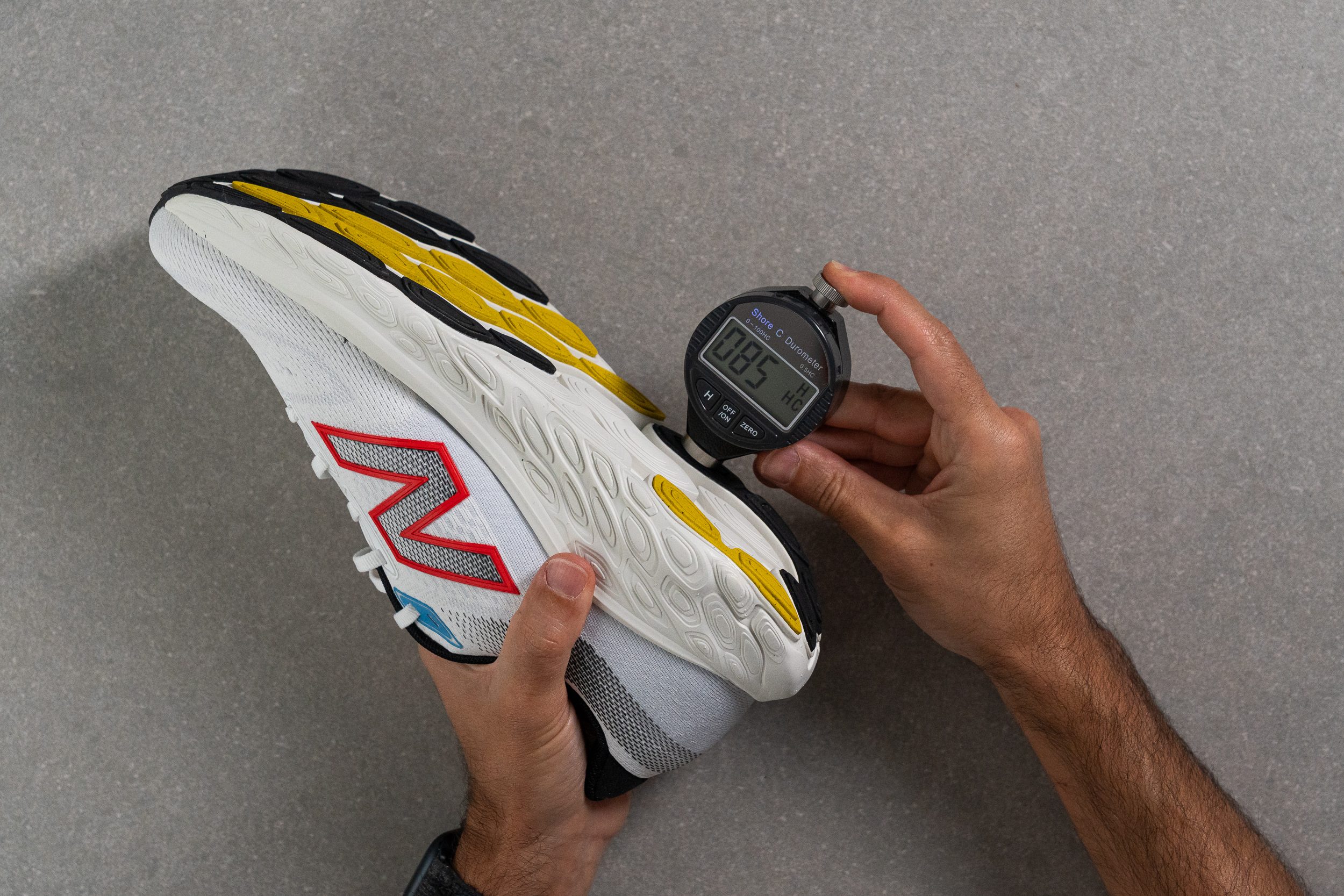
| Fresh Foam X 880 v14 | 85.0 HC |
| Media | 79.2 HC |
Durabilidad de la suela
Para ver si este material firme también es más duradero, cogimos nuestro Dremel por por tercera y última vez.
Los resultados nos parecen estándar, con unos daños de 1,2 mm que, aunque no nos preocupan, sí que nos decepcionaron un poco.
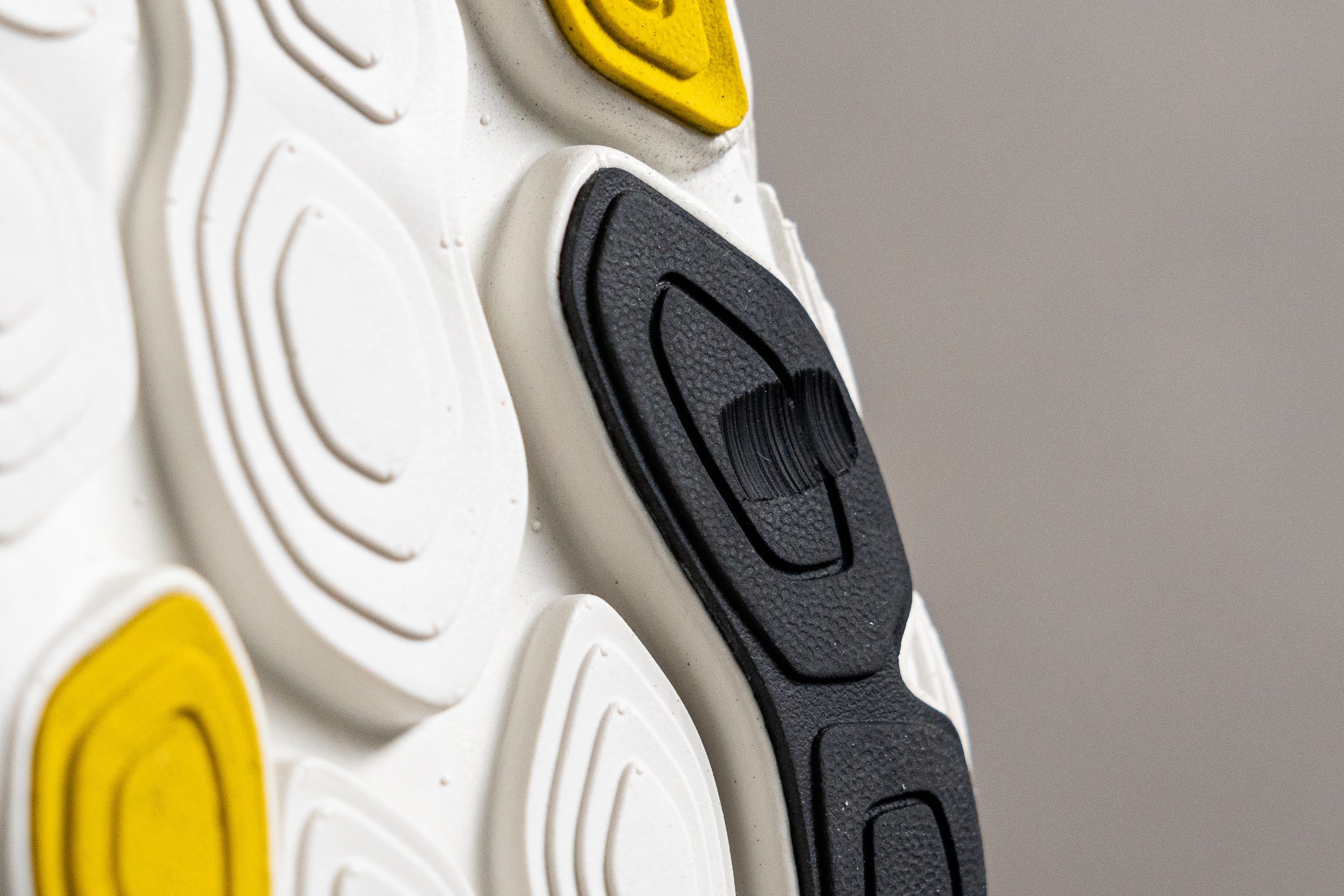
| Fresh Foam X 880 v14 | 1.2 mm |
| Media | 1.1 mm |
Grosor de la suela
New Balance lo compensó utilizando mucho caucho en la suela exterior. Creemos que sus 3,4 mm de grosor alargarán la vida útil de estas zapatillas.
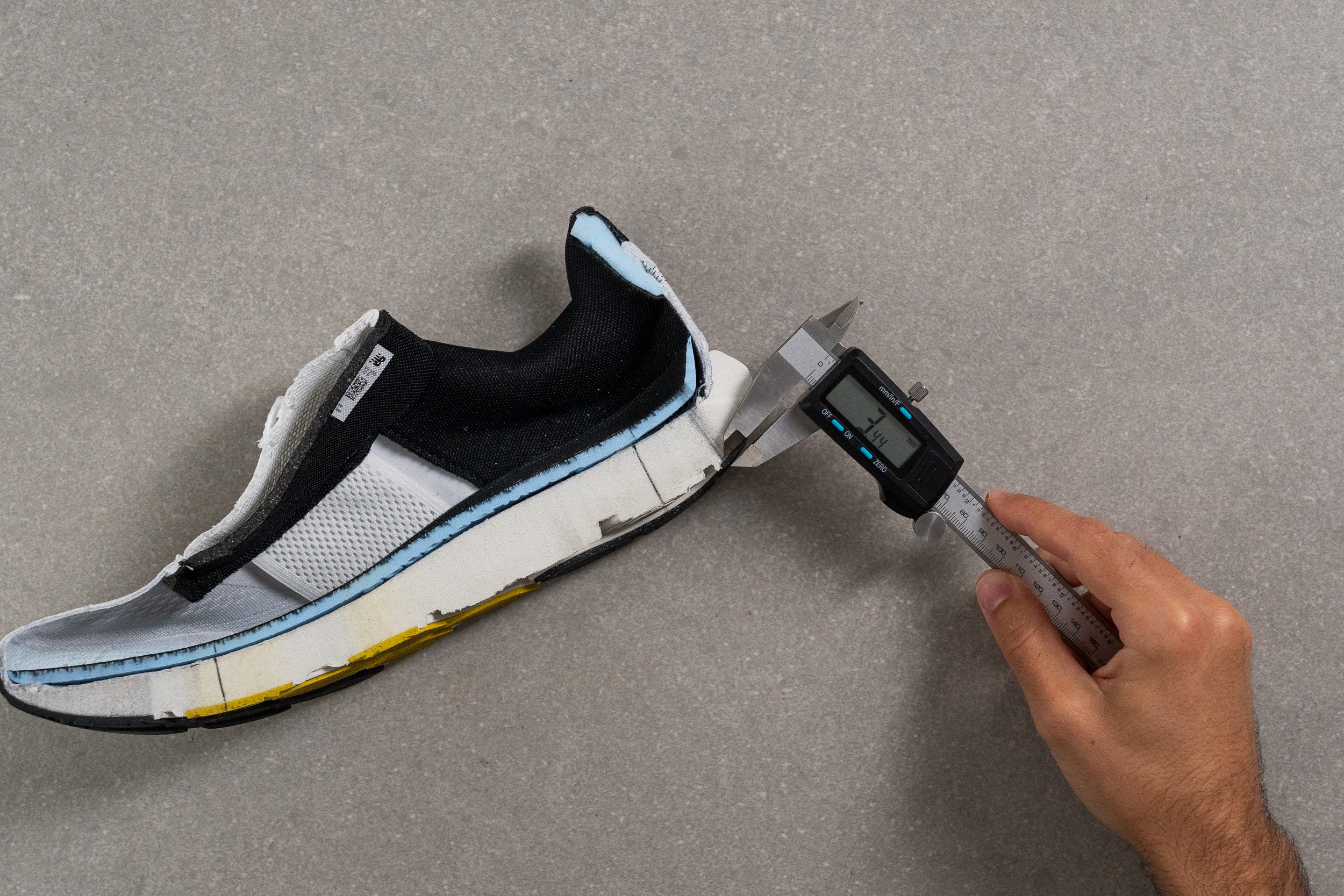
| Fresh Foam X 880 v14 | 3.4 mm |
| Media | 3.2 mm |
Varios
Grosor de la plantilla
La plantilla no tiene nada de especial, y sus 4,7 mm de grosor la hacen parecida a la de la mayoría de las zapatillas de running.
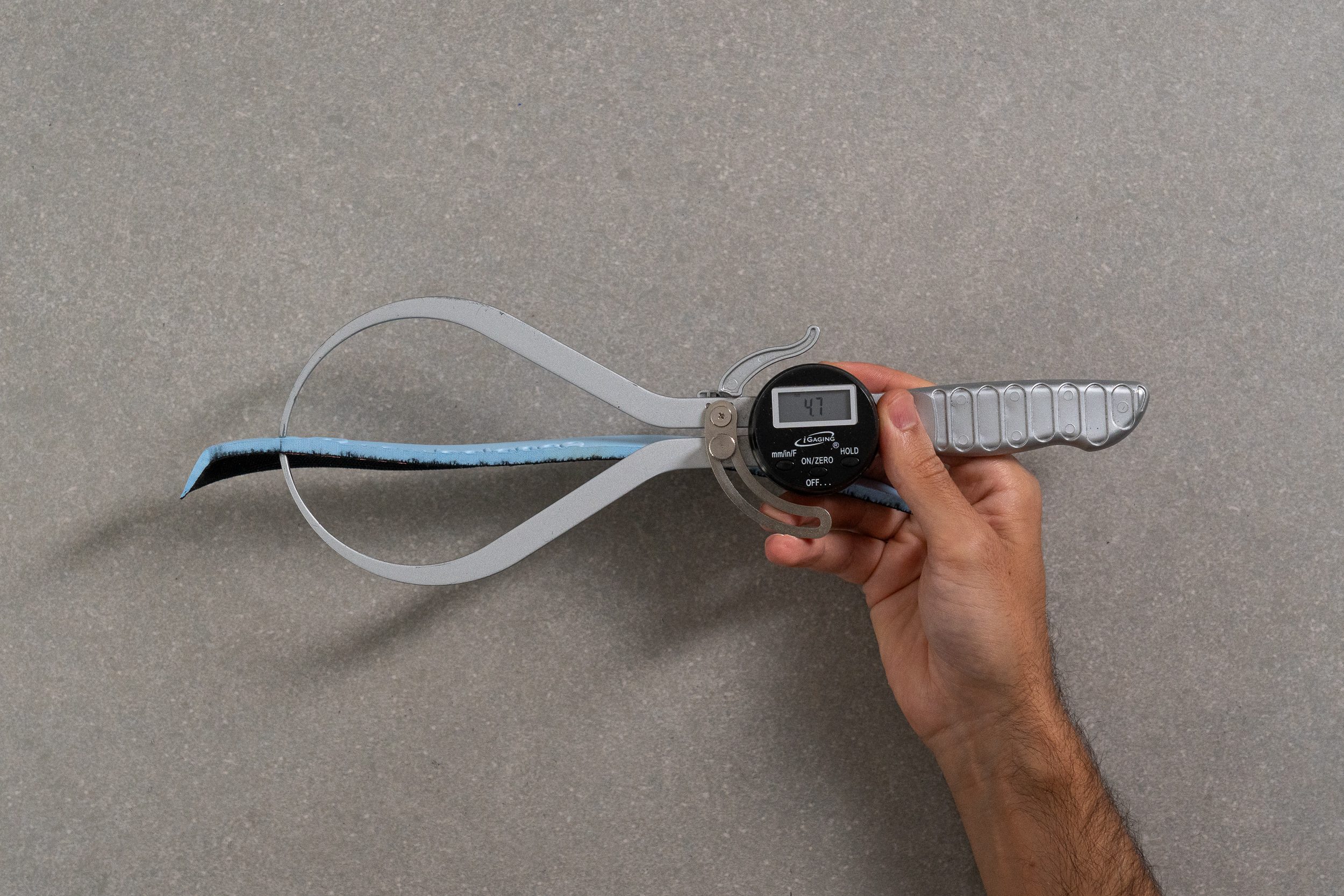
| Fresh Foam X 880 v14 | 4.7 mm |
| Media | 4.5 mm |
Plantilla extraíble
Nos fue fácil quitarles las plantillas y cambiárselas por otras, ya que gracias a su espacioso ajuste no nos pusieron ningún problema.
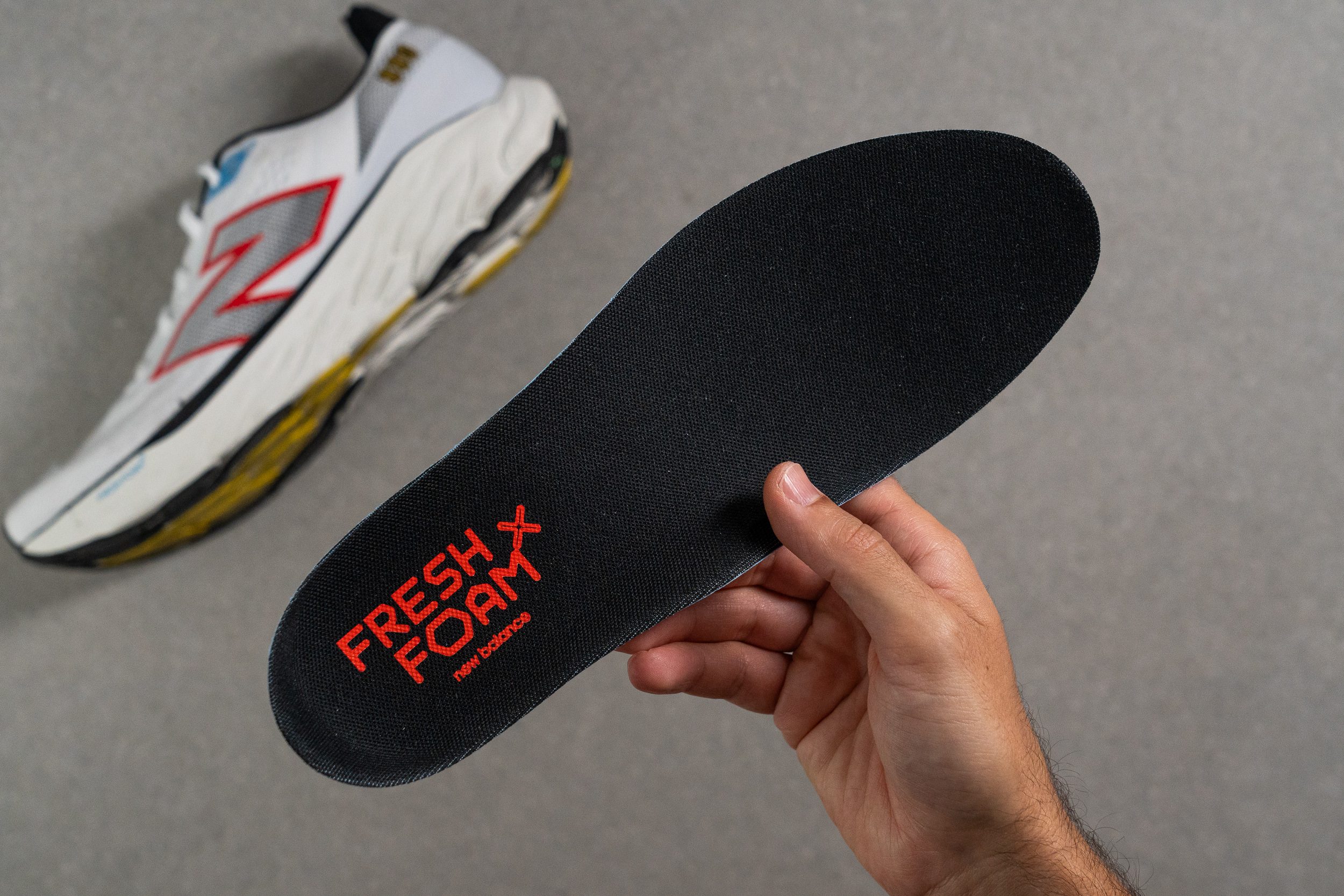
Lo que sí que nos impresionó fue el detalle en la parte de atrás de la plantilla, y es que New Balance puso ahí su logo, dándole un toque muy chulo en el que puede que no mucha gente se fije. Es como la idea de Steve Jobs: incluso lo que está oculto tiene que ser diseñado de forma cuidadosa, aunque mucha gente no perciba su existencia.
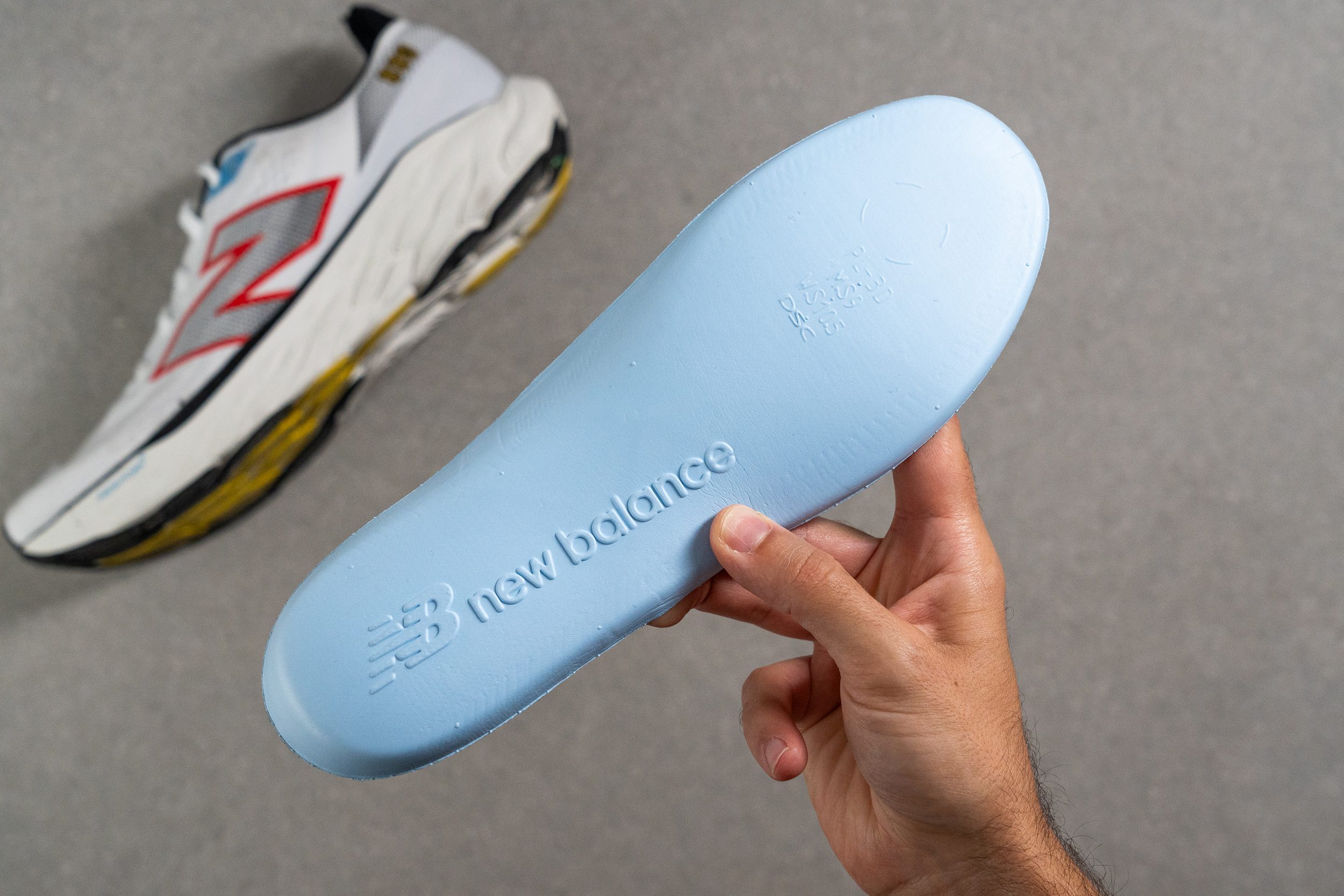
| Fresh Foam X 880 v14 | Sí |
Rigidez de la mediasuela en frío (%)
Como la Fresh Foam X se basa en EVA, que es un material conocido por su bajo rendimiento a bajas temperaturas, no nos sorprendió que la mediasuela se volviera un 41 % más firme después de estar 20 minutos en el congelador. Aunque este resultado nos decepcionó, no podemos decirte que no nos lo esperásemos.
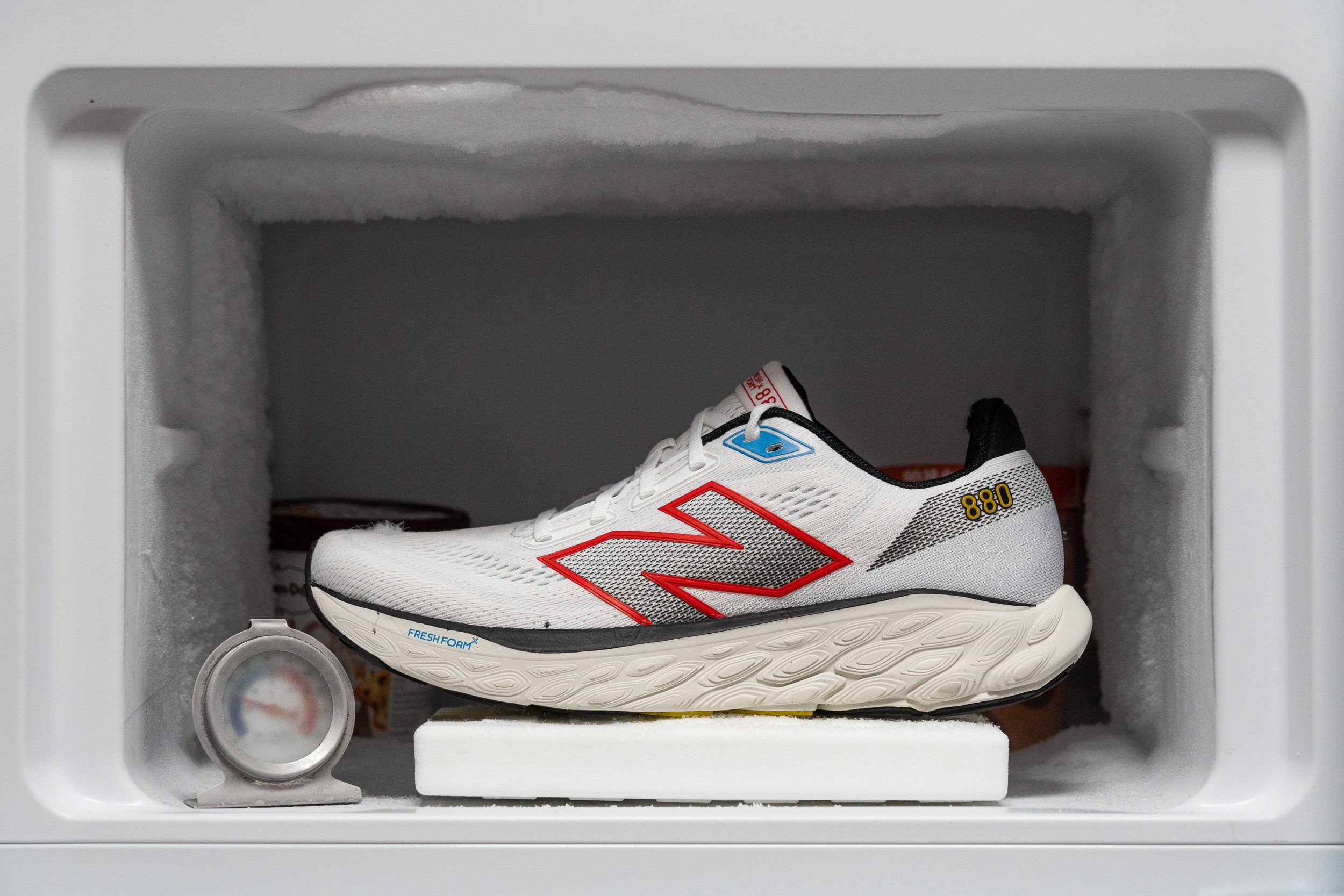
| Fresh Foam X 880 v14 | 41% |
| Media | 24% |
Elementos reflectantes
Como la mayoría de las zapatillas de entrenamiento diario del mercado tienen elementos reflectantes, tenemos que admitir que fue un poco decepcionante no verles ninguno a las 880 v14.
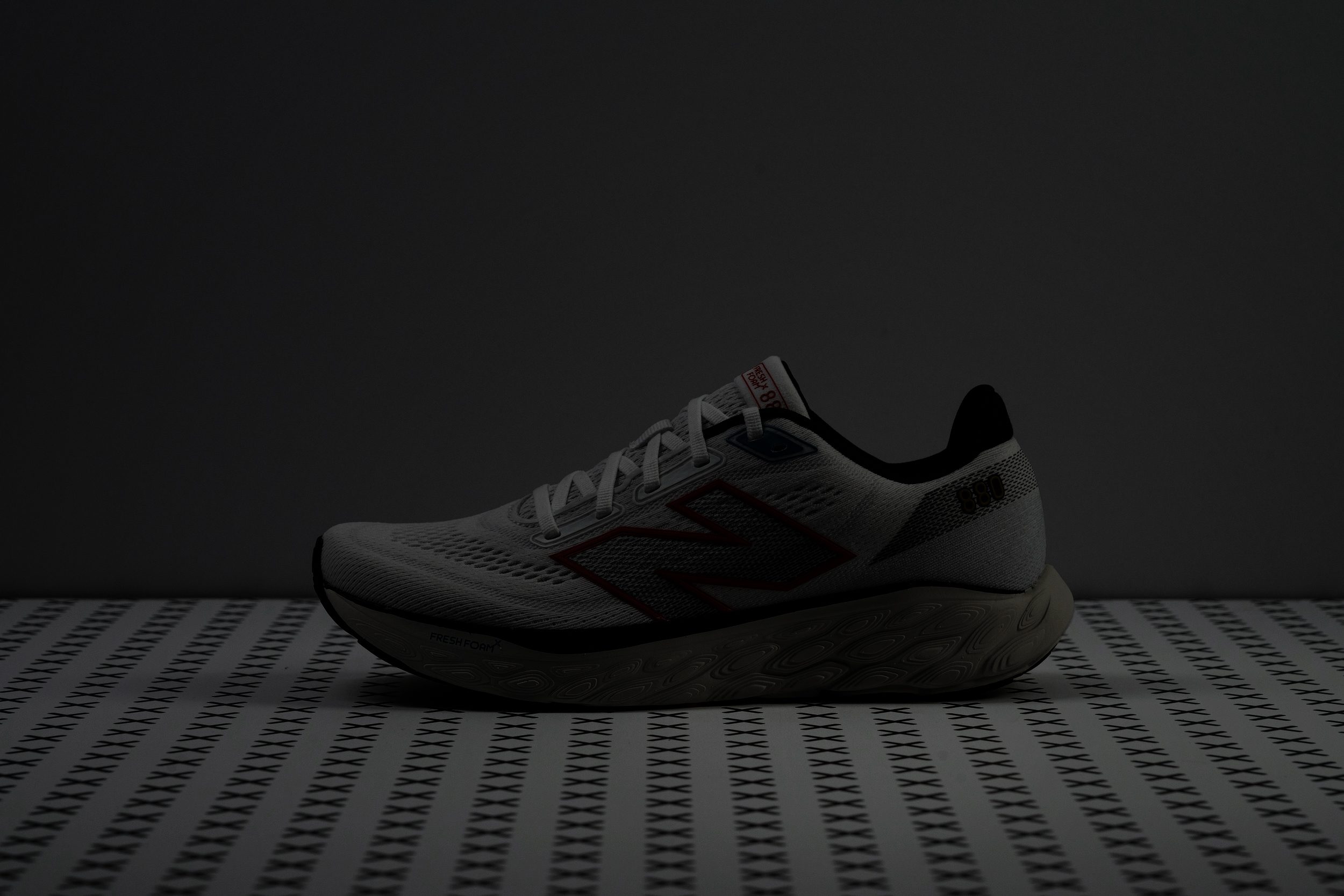
| Fresh Foam X 880 v14 | No |
Acolchado de la lengüeta
Descubrimos que la lengüeta de estas zapatillas está bien acolchada con sus 7,9 mm de grosor, haciendo que sean más cómodas en las distancias largas en comparación con otros modelos que tienen lengüetas más finas.

Además, personalmente, nos encanta el sistema de cordones. Son planos y los ojales son perforados, una de nuestras combinaciones favoritas. Por si esto fuera poco, hay un ojal extra para los que prefieren un ajuste ceñido alrededor del tobillo.
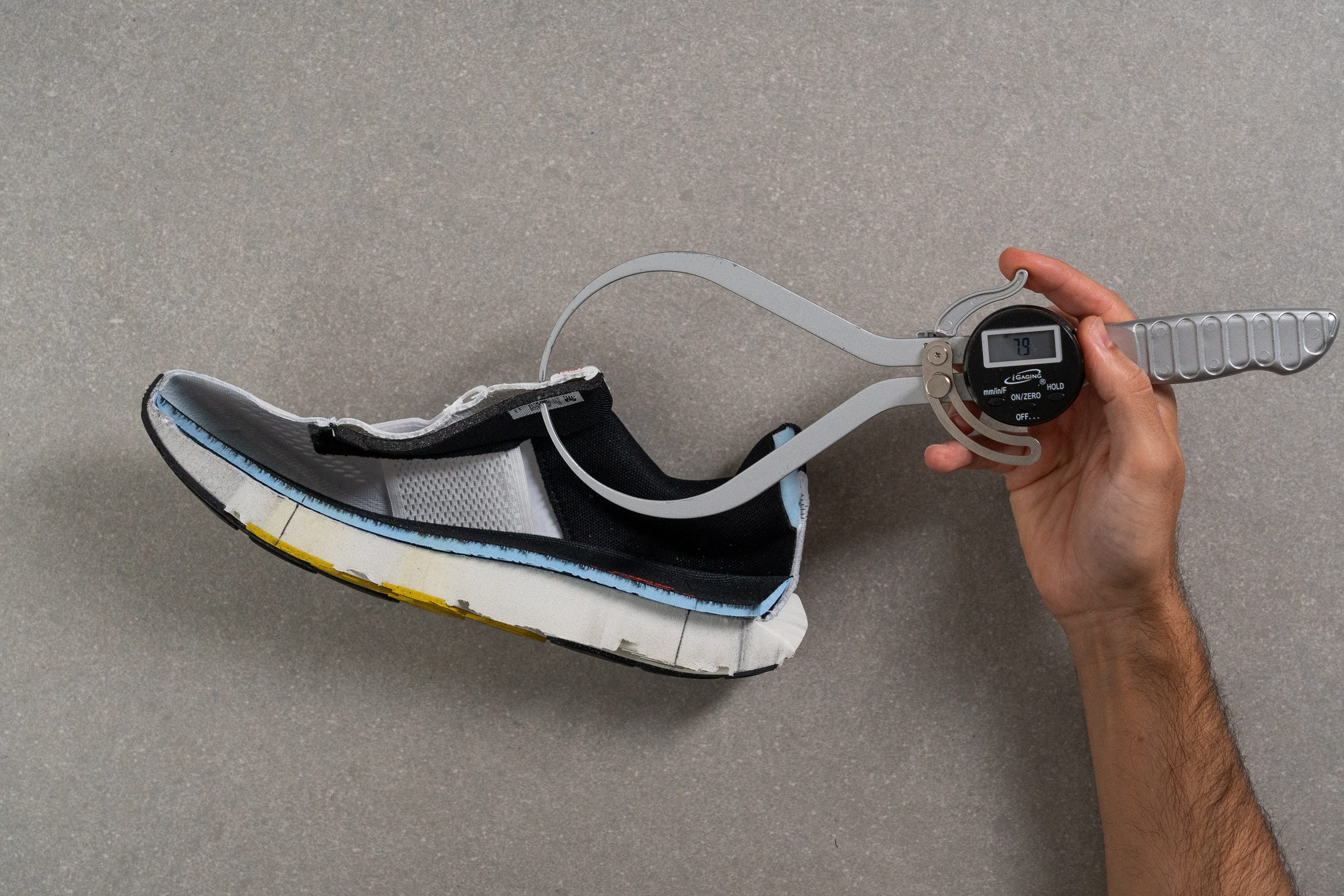
| Fresh Foam X 880 v14 | 7.9 mm |
| Media | 5.8 mm |
Lengüeta: tipo de refuerzo
Encontrarnos con una lengüeta semi-reforzada en unas zapatillas de entrenamiento diario por este precio es una maravilla, ya que hay muchas marcas que reservan este detalle para sus modelos de gama alta. Esta característica no solo mejora el cierre, sino que también aumenta el valor general de las 880 v14.
Nos encantó que NB le añadiese perforaciones al material de los refuerzos de la lengüeta, mejorando así el flujo de aire. Nos parece un toque muy importante en este modelo, ya que no le vendría nada mal un poquito más de transpirabilidad.

| Fresh Foam X 880 v14 | Ambos lados (semi) |
Precio
Las 880 v14 tienen un precio justo que va de la mano con el de la mayoría de las zapatillas de entrenamiento diario del mercado, incluidas las Nike Pegasus 41, así que su relación calidad-precio es maravillosa. La verdad es que no tenemos queja, y ojalá las futuras versiones mantengan este precio sin subirlo.
| Fresh Foam X 880 v14 | $140 |
Tirador del talón
Las 880 v14 no tienen un tirador en el talón, pero sí que cuentan con una pequeña extensión en esa zona que le proporciona una sujeción sólida al tendón de Aquiles. En nuestra experiencia, también hace que calzarse sea un poco más fácil.
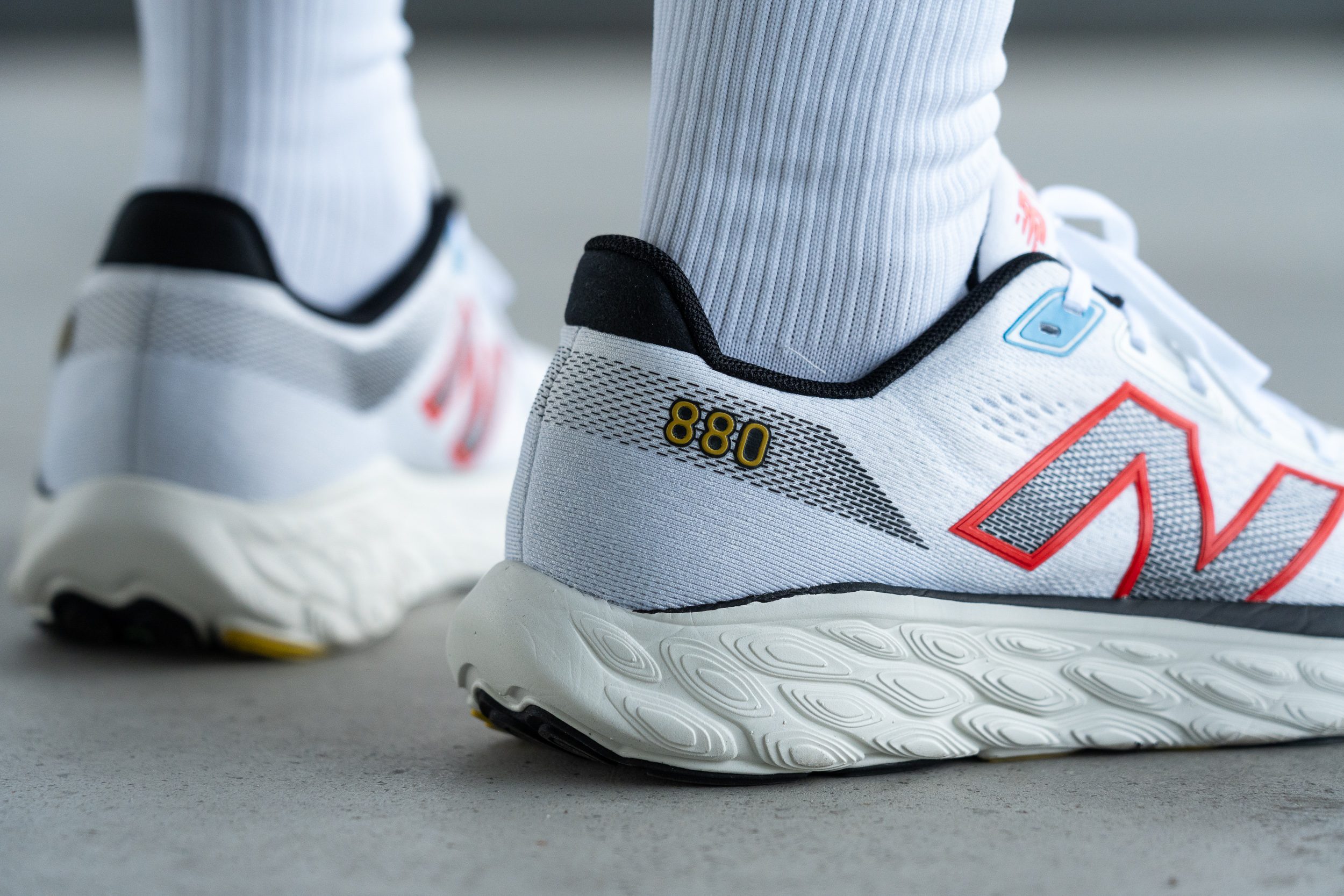
| Fresh Foam X 880 v14 | Ninguno |

